

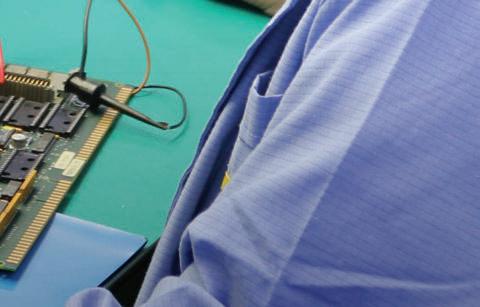





ISSUE 141 | APRIL 2024 OFFICIALLY ENDORSED BY SOLAR INSTALLER PAGE 26 PAGE 28 PAGE 40 Australia’s greener future Critical role of social procurement Guardian of the solar power New lease on life Extending the life of industrial electronic assets – pg 22


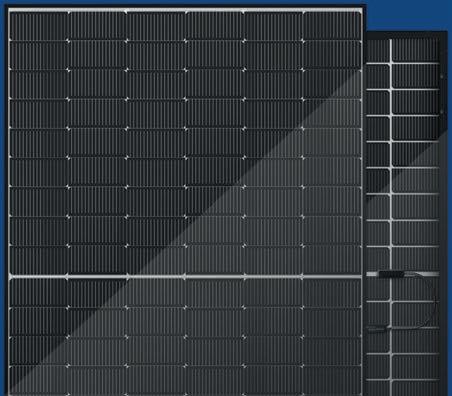







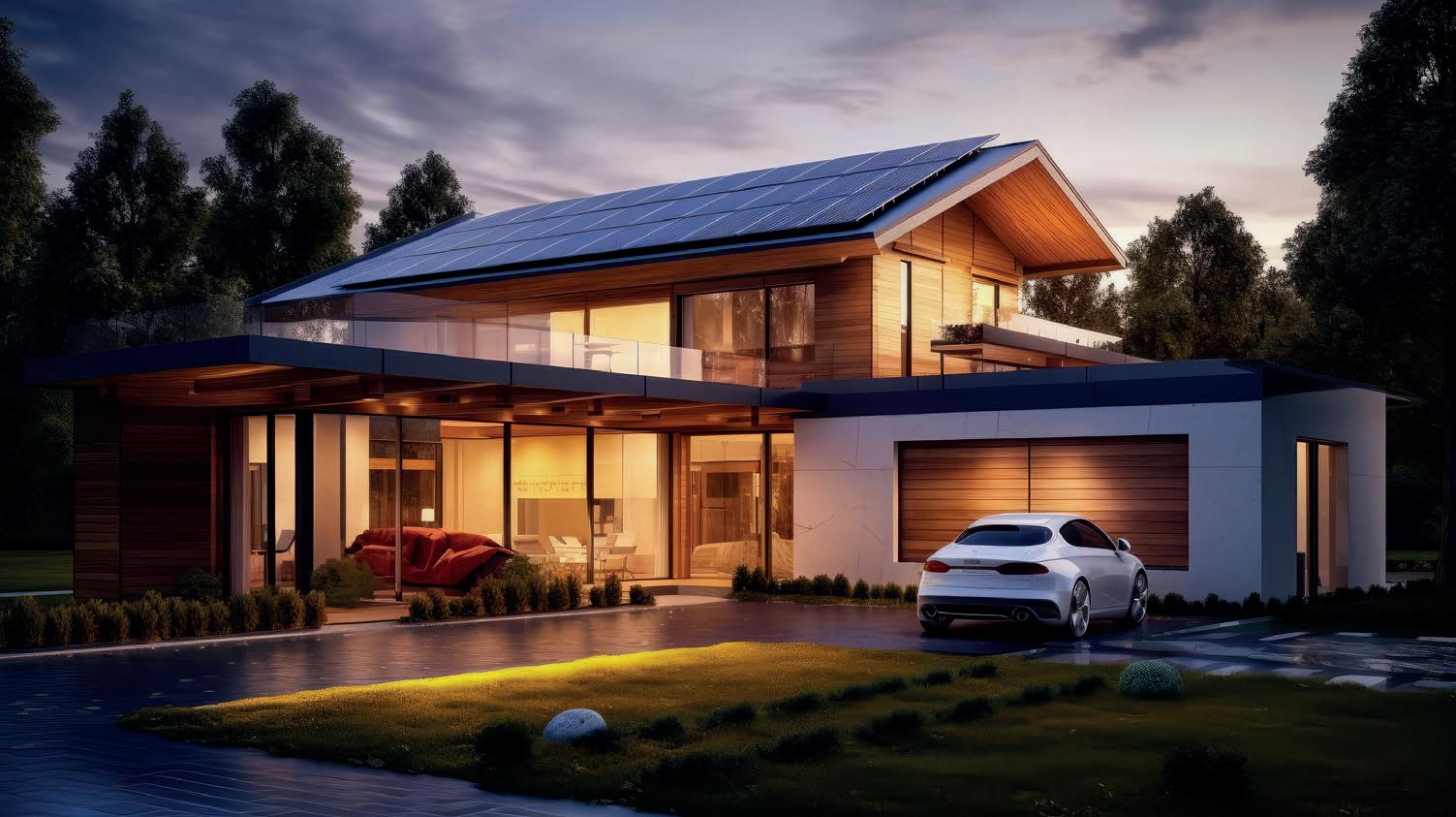
Have you got the procurement & supply chain expertise to deliver your renewables projects? We do.
We can help you:
Build the right supply chain
Deliver on your ESG commitments
Enable high performance procurement

We are a specialist Asia Pacific procurement and supply chain consulting firm, part of Bain & Company. We deliver an integrated end-to-end procurement transformation offering.
DO YOU KNOW A DRIVER OF CHANGE?
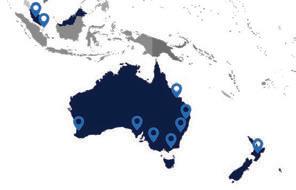
Our team are highly experienced in delivering procurement, supply chain and social impact for infrastructure and renewable energy projects, including wind, solar, hydrogen, hydro and transmission.
Thurs 20 June, 2024
WOMEN IN INDUSTRY NOMINATIONS ARE NOW OPEN.
Our experienced team of 150+ procurement and supply chain professionals, provide organisations with practical, hands-on advice and delivery support.
Now is your chance to nominate an industry leader who you believe is advocating for positive change and deserves to be recognised.
Find out how we can help you take your project from design, to delivery and operation.
The Women in Industry Awards recognise outstanding women leaders from across Australia’s industrials sector.
Justin Sara, Director ArcBlue justin.sara@arcblue.com.au
arcblue.com/energy-naturalresources
+61 401 252 770
womeninindustry.com.au PROUDLY SUPPORTED BY Australia PROUDLY PRESENTED BY MHD upply



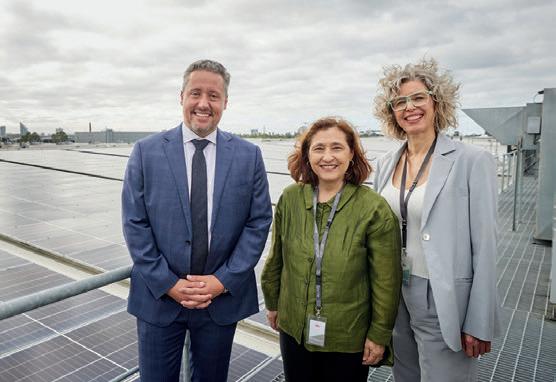
4 | ecogeneration April 2024 www.ecogeneration.com.au REGULARS From the editor ......................................................................................................................6 News in brief ..............................................................................................................................8 Industry update with Kane Thornton ......................................................... 16 Greener horizons for the sunshine state ............................................ 20 THE SOLAR INSTALLER Akcome: Designed to shine 38 Guardian of the solar power ............................................................................... 40 Unlocking the potential of commercial solar ..................................42 Say goodbye to power outages .................................................................... 44 ATESS unveils ‘worry-free’ off-grid solution .................................... 46 Solar news ................................................................................................................................48 Solar Accreditation Australia confirmed as new accreditor............................................................................................................ 50 CORE market wrap .........................................................................................................52 Equinix unveils 1MW rooftop solar system ......................................... 54 Like us on Facebook facebook.com/EcoGenMag 18 56 54 30
The accreditation provider for installers and designers .....18 Rejuvenating industrial electronic assets ........................................... 22 Taking Australia into a greener future ....................................................26 Redefining social procurement and licence...................................... 28 Publisher first to use paper-wrapping mailing machine 55 Exploring the winds of change ........................................................................ 56 Be here and be part of the future ................................................................ 58 ELECTRIC VEHICLES Australia’s electric vehicle juncture ................................................... 30 Plug into the future ............................................................................................... 32 Embracing the future of electrive vehicle fleets .................... 34 Contents ISSUE 141 | APRIL 2024
FEATURES

























Growatt New Energy Australia Pty Ltd au.growatt.com 1800 476 928 australia@ginverter.com Reliability
Inverter Supplier Residential Inverter Supplier
Inverter Supplier
To enable everyone to benefit from sustainable energy PV
Hybrid
SustainabilityAll-Scenario Solutions SMART ENERGY FOR A REEN FUTURE
From the editor

Welcome to the April edition of ecogeneration. This issue focuses on Australia’s rising demand for electric vehicles (EVs) necessitates the rapid growth of charging infrastructure, from commercial road transport to home charging stations, and everything in between.
With a focus on EV, ecogeneration takes a deep dive into the industry by speaking with Daniel Bleakley, Senior Energy and Technology Transition Advisor at Next System about how in comparison to many countries, Australia lacks nationwide incentives for purchasing new EVs.
Despite the hard truths of Australia’s EV industry, Bleakley said we should not be discouraged, with recent data showing Australia’s EV market slowly growing.
EV sales more than doubled in 2023 to 87,217 vehicles, capturing 7.2 per cent of the total market, according to the Federal Chamber of Automotive Industries. When including hybrids, electrified models accounted for an impressive 16.2 per cent share.
This momentum has continued into 2024, with EVs achieving a record 9.6 per cent market share in February.
Recognising this shortage of expertise in EV, Holmesglen has launched a specialised EV charging infrastructure course, tailored for the Australian market, and based on local standards. The course equips licensed electricians with the knowledge and skills necessary to design, install and commission EV chargers.
February was also a month of change, with the Clean Energy Regulator (CER) announcing Solar Accreditation Australia (SAA) as the new installer and designer accreditation scheme operator supporting the small-scale Renewable Energy Scheme (SRES).
SAA now replaces the Clean Energy Council (CEC), which served in this role for the past decade, with the official transition period now underway.
SAA is an independent and accountable body which aims to enhance standards, transparency, and accountability in the solar energy sector. Accredited installers and designers under SRES must transfer to SAA by June 2024 to maintain eligibility for small-scale technology certificates. The transition incurs no fee, and existing CEC accreditation expiry dates and fees are honoured.
Happy reading!
Molly Hancock ecogeneration Managing Editor

Follow ecogeneration on LinkedIn
ecogeneration acknowledges the Cammeraygal people, traditional custodians of the land on which this publication is produced, and we pay our respects to their elders past and present. We extend that respect to all Aboriginal and Torres Strait Islander people today.
Chief Executive Officer: John Murphy
Managing Editor: Molly Hancock molly.hancock@primecreative.com.au
Assistant Editor: Fred Zhang
Business Development Manager: Nick Lovering, +61 414 217 190
nick.lovering@primecreative.com.au
Client Success Manager: Karyssa Arendt karyssa.arendt@primecreative.com.au
Production Manager: Michelle Weston
Head of Design: Blake Storey
Designer : Kerry Pert
Subscriptions : T: +61 3 9690 8766 subscriptions@primecreative.com.au





Cover image: (Main) Rom-Control.
ecogeneration is printed on Lumi paper which is PEFC-certified and manufactured in an ISO 14001-certified mill. Lumi paper also contains premium white waste paper, reducing matter going into landfill. This magazine is available to interested parties throughout Australia and overseas. Themagazine is also available by subscription. The publisher welcomes editorial contributions from interested parties, however, the publisher and the Editorial Board accept no responsibility for the content of these contributions and the views contained therein are not necessarily those of the publisher or of the Editorial Board. The publisher and theEditorial
For the latest industry news, sign up for the FREE WEEKLY NEWSLETTER and check out our website at ecogeneration.com.au
Average net distribution 6616 Period ending September 2021
stated otherwise in writing, by providing editorial material to Prime Creative Media, including text and images, you are providing permission for that material to be subsequently used by Prime Creative Media, wholeor in part, edited or unchanged, alone orin combination with other material in any publication or format in print or online or howsoever distributed, whether produced by Prime Creative Media and its agentsand associates or another party to who Prime Creative Media has provided permission. www.ecogeneration.com.au Published by: PRIME CREATIVE MEDIA PTY LTD ABN: 51 127 239 212 379
Drive Melbourne
3008, Australia T: +61
Board do not accept responsibility for any claims madeby advertisers.Unless explicitly
Docklands
VIC
3 9690 8766 www.primecreativemedia.com.au
SOLAR INSTALLER New lease on life life of industrial –6 | ecogeneration April 2024 EDITORIAL







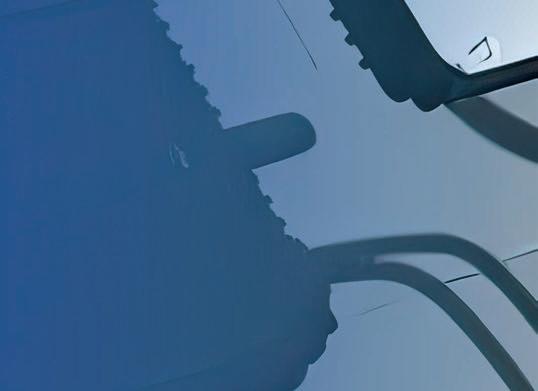

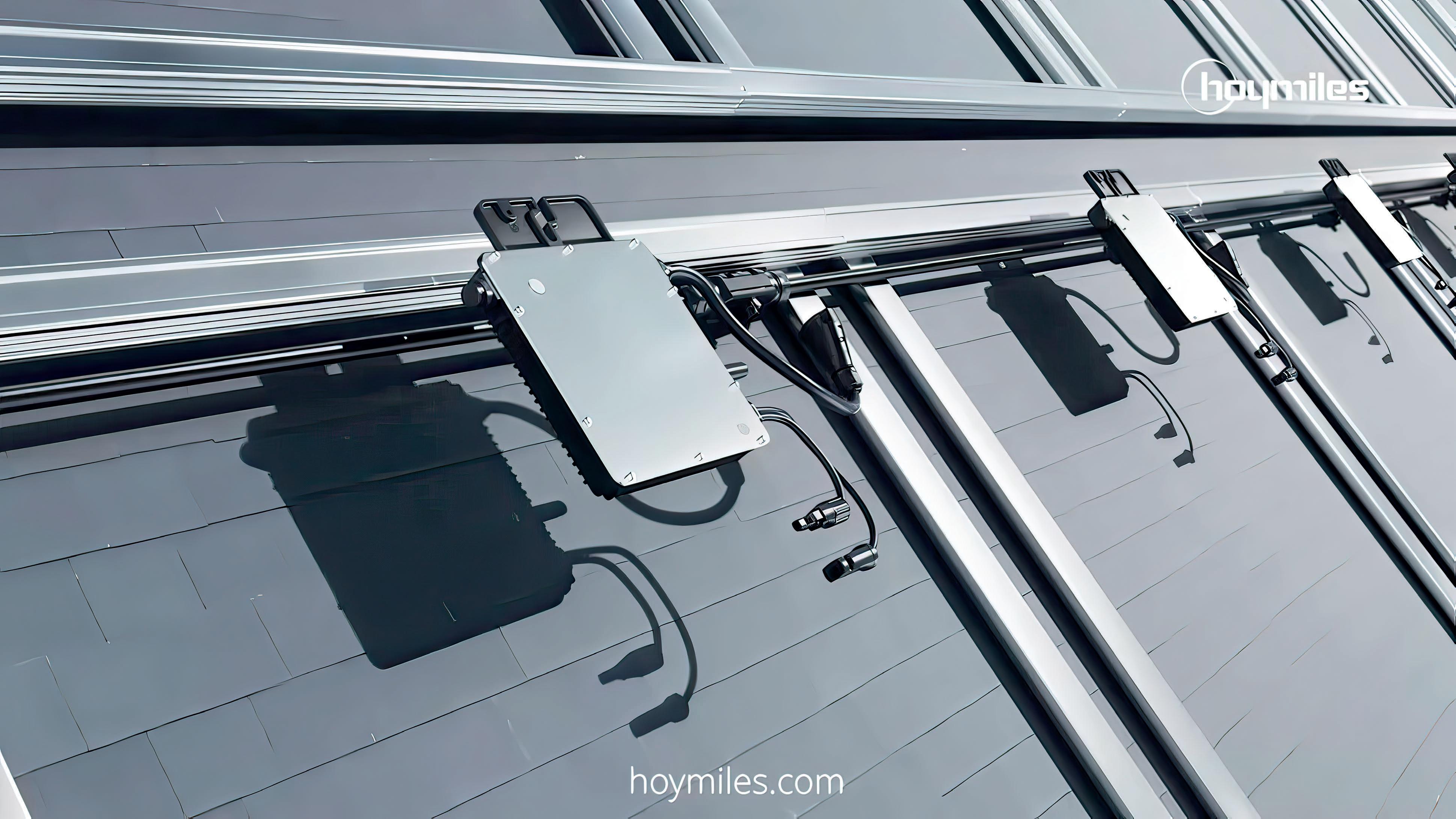

Affordable, Reliable, Durable Embrace the Future, A Safer Choice hoymiles.com Microinverter Expert Open Energy for all
News in brief
Australia’s first indigenous engagement guide for renewables industry unveiled
The Clean Energy Council (CEC) and KPMG have jointly launched Leading Principles: First Nations and Renewable Energy Projects, marking the first comprehensive national guide on meaningful engagement, consent, participation, and benefit-sharing with First Nations people in Australian renewable energy projects.
Co-authored with the First Nations Clean Energy Network, the guide operationalises the network’s Aboriginal and Torres Strait Islander Best Practice Principles for Clean Energy Projects.
CEC Chief Executive Officer Kane Thornton said the guide’s purpose is to uphold the rights of First Nations peoples and enhance community outcomes.
“Australia’s clean energy sector has identified the need for stronger engagement and relationships with First Nations peoples,” Thornton said.
“We are proud to partner with the First Nations Clean Energy Network and KPMG to forge a path ahead for Australia’s clean

energy industry to work hand in hand with First Nations communities.
“With proper practices in place, the essential work of the energy transition will not only accelerate Australia towards achieving its targets but provide First Nations Australians with an opportunity to be heard and play a crucial role in a defining economic shift for the country.”
Leading Principles: First Nations and Renewable Energy Projects outlines expectations for industry and provides key considerations at each project stage, promoting stronger relationships and engagement with First Nations communities and groups.
First Nations Clean Energy Network coChair Karrina Nolan stressed the guide’s role in placing the rights, interests, and aspirations of First Nations peoples at the forefront of Australia’s clean energy transformation journey.
“The guide provides a new template for
governments, industry and First Nations communities to work together towards the shared goal of more affordable, reliable and sustainable energy for all,” Nolan said.
“Meaningful engagement with First Nations communities leads to energy partnerships, equity and ownership opportunities stands to maximise community support for projects, increase opportunities for local employment and businesses, and deliver stronger outcomes for sustainability and energy security.
Nolan added that the rights, interests and aspirations of First Nations peoples must be front and centre to achieve a just clean energy transformation. She said this will ultimately minimise risks, costs and delays for renewable energy projects being planned, developed and operated on country.
“And it’s something which must be done in partnership with industry. This guide can help with that,” she said.
Rio Tinto inks Australia’s largest renewable energy deal
Rio Tinto, one of the world’s biggest mining companies, has inked Australia’s largest renewable power purchase agreement (PPA) to date.
The 25-year PPA will see Rio Tinto acquire 80 per cent of the electricity from Windlab’s forthcoming 1.4 gigawatt (GW) Bungaban wind energy project to supply its Gladstone operations in Queensland.
Rio Tinto said the agreement solidifies its position as the largest industrial purchaser of renewable power in Australia. The Gladstone operations include the Boyne aluminum smelter, Yarwun alumina refinery, and Queensland alumina refinery.
Still early in its development, the Bungaban project is set to be constructed and operated by Windlab at a site about 40km from

the town of Wandoan, and 290km south-west of Gladstone.
The Windlab agreement follows Rio Tinto’s recent PPA with European Energy Australia at the Upper Calliope solar farm, where the mining giant announced it will buy all electricity from the 1.1GW solar farm located 50km south-west of Gladstone.
Once operational, the combined 2.2GW of renewable PPAs with Windlab and European Energy could potentially slash carbon emissions by five million tonnes per year, constituting 10 per cent of Queensland’s current power demand.
In a statement, Rio Tinto Chief Executive Officer Jakob Stausholm emphasised the importance of large-scale renewables development.
“This agreement with Windlab builds on our momentum in our work to repower our Gladstone operations and provide a sustainable future for heavy industry in Central Queensland,” Stausholm said.
“The task remains challenging, but we have a pathway to provide the competitive, firmed power our Gladstone plants need, and we are continuing to work hard with all stakeholders, including the Queensland and Australian Governments, on getting there.”
“Competitive capacity, firming, and transmission, are critical to developing a modern energy system that can ensure more large-scale renewables development in Queensland and help guarantee the future of Australian industry.”
Construction of the Bungaban project is scheduled for late 2025, with the aim of becoming operational by 2029.
8 | ecogeneration April 2024 www.ecogeneration.com.au
The guide’s purpose is to uphold the rights of First Nations peoples and enhance community outcomes.
Rio Tinto’s agreement solidifies its position as the largest industrial purchaser of renewable power in Australia.
Image: edojob/stock.adobe.com
Image: Ruslan Batiuk/stock.adobe.com
NEW TECHNOLOGY, NEW PROJECTS, NEW IDEAS

ELECTRONIC EQUIPMENT NEW LIFE FOR YOUR INDUSTRIAL



Rom-Control has been successfully repairing and refurbishing industrial electronic equipment, irrespective of function, make, model or age since 2007.
Imagine working with an expert that can do this at half your OEM replacement costs, backed by 2-year warranty! Now you can.

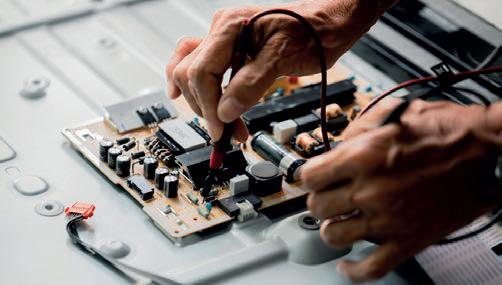
Our team of highly specialised & knowledgeable electronics engineers will repair and refurbish your industrial electronic equipment like:
•Variable Speed Drives and Servo Drives
•Programmable Logic Controllers

•Human Machine Interfaces
•Power electronics
•Inverters, converters
•Numeric controls
In industries like:
•Solar & Wind farms
•Mining
•Oil & Gas
•Light & Heavy Rail
•Shipping & Ports
•Food & Beverage


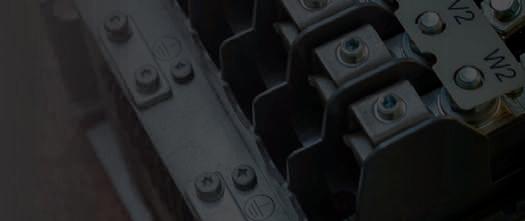
Start the journey to lower YOUR maintenance and capital expenditure and contact us now!
www.rom-control.com.au1300
766 287


Swinburne drives innovation in road-embedded EV charging
Swinburne University of Technology has been granted $3 million to integrate dynamic wireless charging technology into roads, allowing trucks and buses to charge wirelessly as they travel on highways.
The primary focus of the project is on electrifying heavy vehicles, presenting a solution to the challenge of ensuring sufficient charge for these vehicles with heavy loads over long distances.
According to Professor Mehdi Seyedmahmoudian, the leader of the project, the seamless integration of dynamic wireless charging systems into road infrastructure sets the stage for a transformative shift in the heavy vehicle industry.
“This collaborative effort is a perfect example of our shared vision for a sustainable transportation ecosystem that can significantly reduce our environmental footprint,” Seyedmahmoudian said.
The project anticipates significant benefits, not only for the environment but also for the efficiency and safety of the transport sector. By electrifying heavy vehicles, Australia could potentially save $324 billion by 2050, as Swinburne University of Technology said in a statement.
Funded through the Australian Government’s Cooperative Research Centres Projects (CRC-P) Grants scheme, the $8.2 million prototype for embedding advanced wireless charging infrastructure on regional roads is a collaborative effort involving ACE Infrastructure, SEA Electric, Fleet Plant Hire, Royal Melbourne Institute of Technology, Siemens, ARRB Group, and Net Zero Stack.



Queensland’s Wambo Wind Farm set to double in size
The Queensland Government has announced its plans to nearly double the capacity of the Wambo wind farm project in the southwest region of the state.
The expansion of the Wambo Stage 2 project will see the addition of 41 turbines to the existing 42-turbine farm in Jandowae, resulting in a total energy production of 506 megawatts (MW) by 2026.
These turbines, towering at 247m, are among the largest onshore wind turbines in the nation.
Queensland Minister for Energy and Clean Economy Jobs Mick de Brenni said the state’s abundant wind resources are attracting growing global interest, creating jobs and economic opportunity for the state.
“Queensland has the cheapest power of any state in Australia thanks to our nationleading cost-of-living relief support and growing renewables base – and today’s announcement will help keep it that way,” de Brenni said.
“Major industrial energy users are seeking low emissions power to decarbonise their production and the Miles Government is delivering, because that’s good for the economy and good for jobs.
“Queensland has been the world leader in rooftop solar, are now we are building world-class wind power thanks to partnerships between publicly owned energy companies like Stanwell, and Cubico Sustainable Investments.”
The Queensland Government, through its Queensland Energy and Jobs Plan, aims to reduce household power bills by about $150 per year and small business costs by approximately $1495 annually by 2032, with the assistance of projects like Wambo Stages 1 and 2.
Additionally, wholesale prices are expected to decrease by around 15 per cent by 2040 as the state transitions to renewable energy.
The Wambo wind farm is a collaborative effort between publicly owned energy company, Stanwell Corporation, and global sustainable developer, Cubico. Stanwell will own 50 per cent of the energy produced, with the remaining power purchased from Cubico under a 15-year agreement.
Doubling the size of Wambo is anticipated to contribute significantly to the state’s goal of achieving 70 per cent renewables by 2032, with the added benefit of stimulating the local economy.
The construction phase is expected to create around 200 direct jobs and up to 500 indirect jobs, providing a substantial economic stimulus during the multiyear build.
Foundations for the first wind turbines of Wambo Stage 1 are already underway, and construction of Stage 2 is scheduled to commence in mid-2024.
Commercial operation of Stage 1 is expected by 2025, with Stage 2 following in 2026, creating an additional eight ongoing jobs.
10 | ecogeneration April 2024 www.ecogeneration.com.au
The QLD Government will double the capacity of the Wambo wind farm project.
The project aims to enable trucks and buses to charge wirelessly as they travel on highways.
Image: piai/stock.adobe.com
NEWS IN BRIEF
Image: vencav/stock.adobe.com
With 12GWh of Battery Energy Storage in development, Pacific Green is focused on playing a crucial role towards achieving the worldʼs net-zero emissions target.
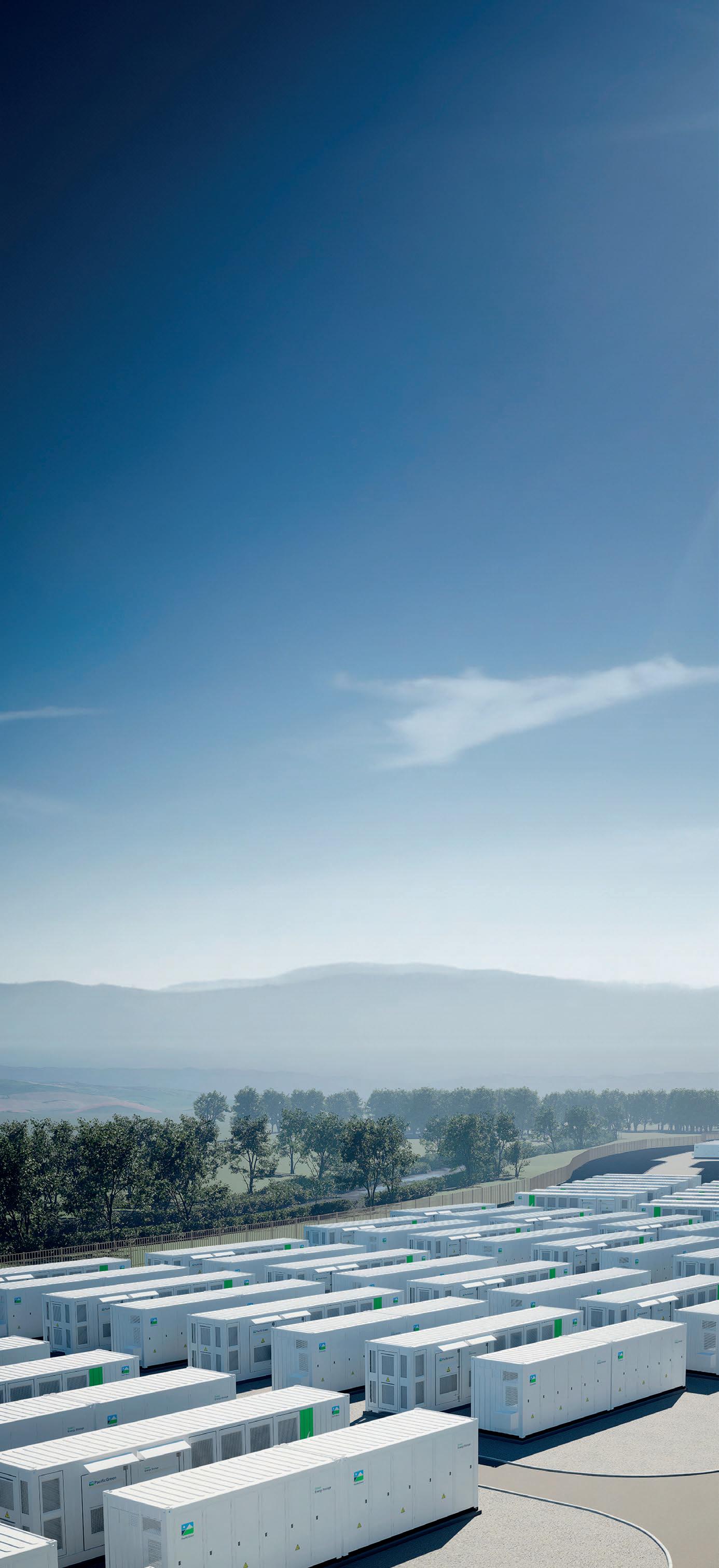
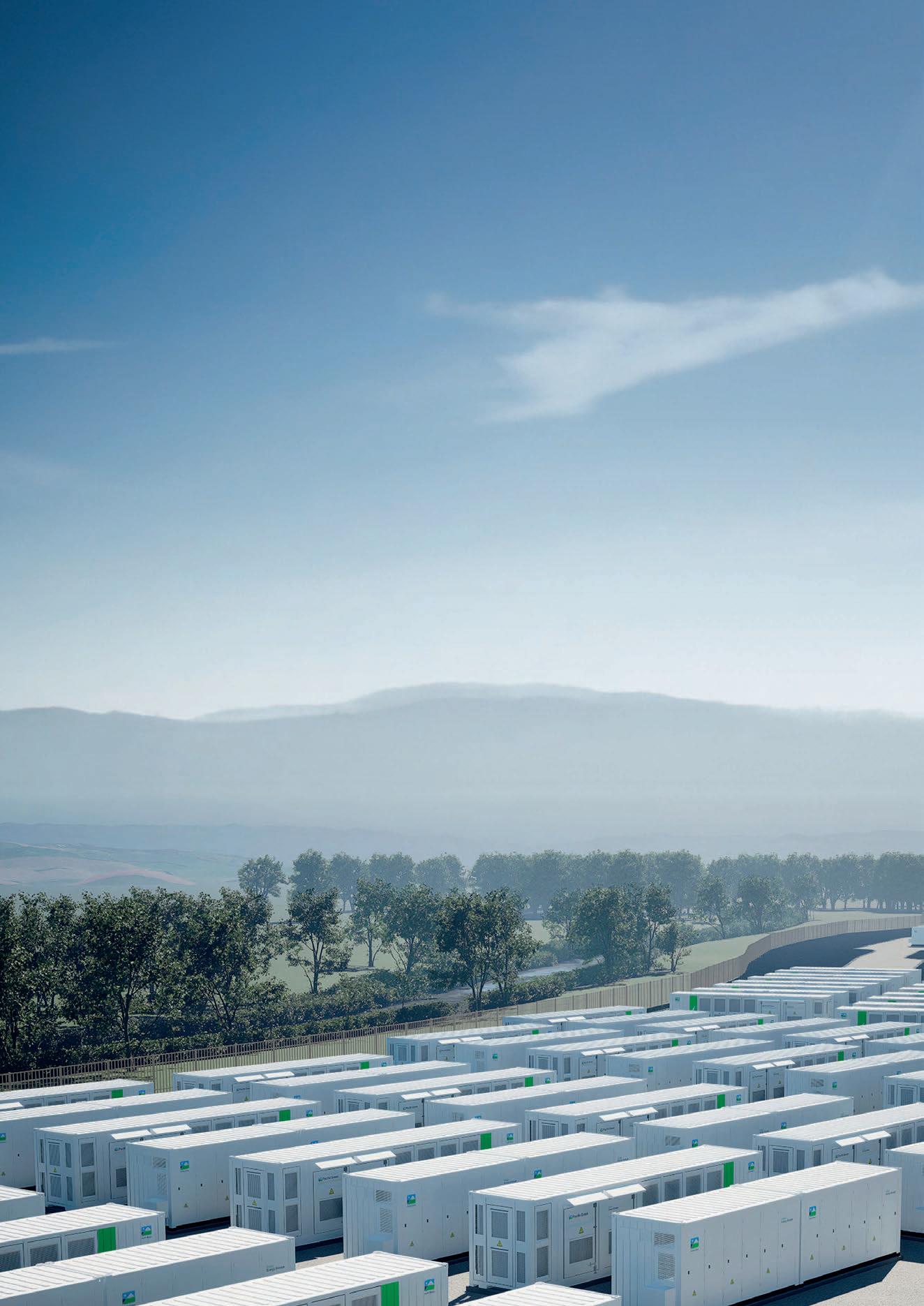
University unveils recyclable water batteries
Researchers at RMIT University, along with global industry collaborators, have developed recyclable “water batteries” that address safety concerns associated with traditional lithium-ion batteries.
The team focuses on aqueous metal-ion batteries, utilising water instead of organic electrolytes to prevent the risk of fire or explosions. Lead researcher professor Tianyi Ma highlighted the eco-friendly aspect of their batteries, emphasising the ability to safely disassemble them for materials reuse or recycling.
“What we design and manufacture are called aqueous metal-ion batteries – or we can call them water batteries,” Ma said.
“Addressing end-of-life disposal challenges that consumers, industry and governments globally face with current energy storage technology, our batteries can be safely disassembled, and the materials can be reused or recycled.”
According to RMIT, the simplicity of the water battery’s manufacturing process makes mass production feasible, using abundant and less toxic materials like magnesium and zinc.
The team prevented dendrite growth by coating battery parts with a protective layer of bismuth and its oxide.

As a result, the water batteries demonstrated a longer lifespan comparable to commercial lithium-ion batteries, making them suitable for high-speed and intensive real-world applications.
The energy density of the water batteries is closing the gap with lithium-ion technology, with a recent magnesium-ion water battery achieving an energy density of 75 watt-hours per kilogram (Wh kg-1), approaching 30 per cent of the latest Tesla car batteries. The goal is to further increase energy density by developing new nano materials for electrodes.
Professor Ma sees magnesium-ion water batteries as potential replacements for
A $14m to boost Aussie-made batteries
The Albanese Government has allocated $14 million to Powering Australia Limited to establish the Powering Australia Industry Growth Centre, in order to help Australian businesses manufacture renewable energy technologies locally.
The Powering Australia Industry Growth Centre program, spanning from 2023-2024 to 2026-2027, is a key component of

lead-acid batteries in the short term (one to three years) and lithium-ion batteries in the long term (five to 10 years).
“Magnesium is lighter than the alternative metals, including zinc and nickel, has a greater potential energy density and will enable batteries with faster charging times and better capability to support power-hungry devices and applications,” Ma said.
The in-depth study, Synergy of dendrites-impeded atomic clusters dissociation and side-reactions suppressed inert interface protection for ultra stable Zn anode, was originally published in Advanced Materials.
the Australian Made Battery Plan is aimed at boosting domestic battery manufacturing to boost job creation and economic prosperity.
The program will support local businesses in the development and adoption of renewable technologies, with a focus on batteries.
Objectives include facilitating connections between critical minerals producers and renewables manufacturers, fostering collaborations between government, research institutions, and industry, addressing battery regulatory barriers, and supporting First Nations businesses through a dedicated advisor.
According to the government, this initiative aligns with its broader support for the renewable technology industry, encompassing projects like Powering Australia, Rewiring the Nation, and a Future Made in Australia.
Minister for Industry and Science Ed Husic said the potential for batteries, renewables, and low-emissions technologies to create jobs and enhance Australia’s economic resilience in a statement.
“Batteries, renewables and other low-emissions technologies offer huge opportunities for Australian industry to create jobs and the sovereign capabilities critical to our economic success,” Husic said.
“This $14 million investment is targeted support to grow Aussie know-how in these emerging areas.
“It aligns with what we’re doing with our $15 billion National Reconstruction Fund, which has renewable and low-emissions technologies as one of its priority investment areas, once again demonstrating how government linking up policies can better support Australian industry.”
12 | ecogeneration April 2024 www.ecogeneration.com.au
Professor Tianyi Ma (left) and Dr Lingfeng Zhu in the team’s lab at RMIT University.
Image: malp/stock.adobe.com
The program aims to help Australian businesses manufacture renewable energy technologies locally.
NEWS IN BRIEF
Image: Carelle Mulawa-Richards, RMIT University
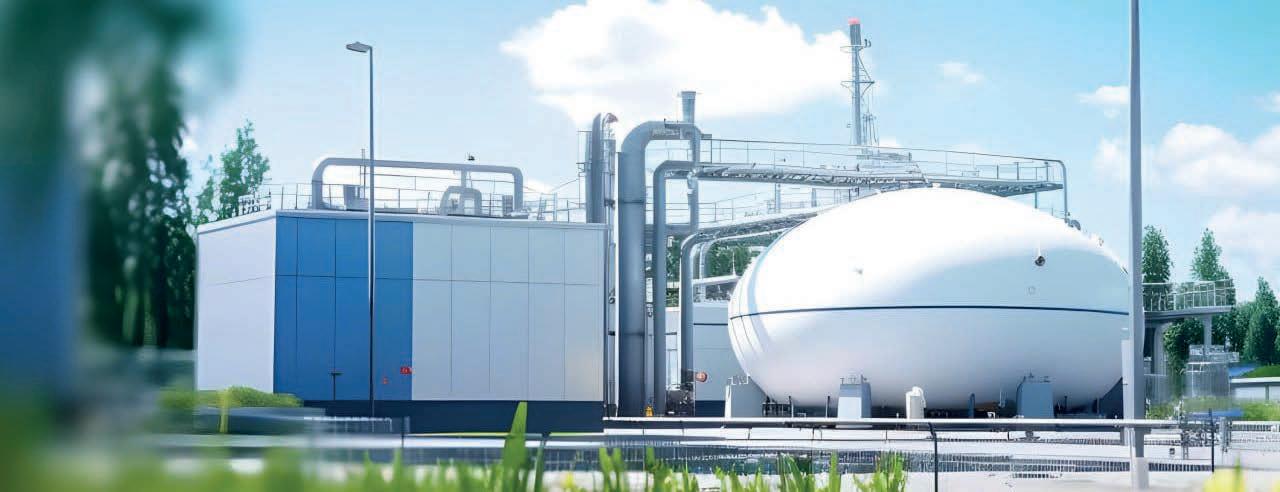
A $140m grant for Pilbara Hydrogen Hub
The Federal Government has finalised a $140 million agreement with Western Australia to establish the Pilbara Hydrogen Hub.
This hub aims to be a significant centre for hydrogen production and export, potentially serving as an international gateway for Australian-made green steel and iron.
The project is expected to generate nearly 1000 direct and indirect jobs, spanning various professions such as builders, concreters, electricians, plumbers, fitters, and technicians.
Construction on infrastructure, including roads and intersections, will commence this year, with the hub expected to be operational by mid-2028. The planned pipeline could facilitate hydrogen production of around 492,000 tonnes annually, contributing to the decarbonisation of existing ammonia production on the Burrup Peninsula.
The $140 million investment, split equally between the Commonwealth and WA Government, will not only support hydrogen exports and renewable energy production infrastructure but also establish a Clean Energy Training and Research Institute. This institute aims to provide practical, jobfocused training in renewable energy and hydrogen for Pilbara residents, including First Nations peoples.
According to Western Australian Premier Roger Cook, the hub was a key part of his government’s plan to turn WA into a
NT–Japan partnership boosts renewable economy
The Northern Territory (NT) Government has signed a memorandum of understanding (MoU) with the Japan Bank for International Cooperation (JBIC) to support eco-friendly projects and boost the local economy.
The MoU establishes a platform for ongoing discussions between the NT and JBIC officials, specifically focusing on financing energy and infrastructure projects.
This collaborative effort extends to a diverse range of sectors, including oil and gas, carbon capture, critical minerals infrastructure, hydrogen, ammonia, renewable energy, and sustainable aviation fuels.
The strategic engagement opportunities facilitated by the MoU position the NT Government and interested stakeholders to showcase the Territory as a dependable supplier of liquefied natural gas (LNG), critical minerals, hydrogen, and solar energy.
global clean energy powerhouse.
“When it comes to producing and exporting world-leading products at a global scale, WA leads the way,” Cook said.
“This project will be WA-produced hydrogen on Asia’s doorstep, helping to strengthen and diversify our economy for the future.”
Minister for Climate Change and Energy Chris Bowen said in a statement that the hub would ensure the Pilbara’s future as a major energy producer and exporter.
“This hub will bring a new clean energy industry to the Pilbara, supporting the region’s world-class industries well into the future,” Bowen said.
“WA is already a global mining and export powerhouse, and it’s now primed to become a world-leading hydrogen supplier as well.”
Kevin Michel WA Member for Pilbara added that the hydrogen hub means hundreds of potential long-term local jobs for the region.
“Developing a hydrogen industry in the Pilbara means more jobs and a strong future for our local communities,” he said.
According to the Federal Government, by 2050 Australia’s hydrogen industry is anticipated to generate $50 billion in additional GDP and create over 16,000 jobs in regional Australia, including WA.
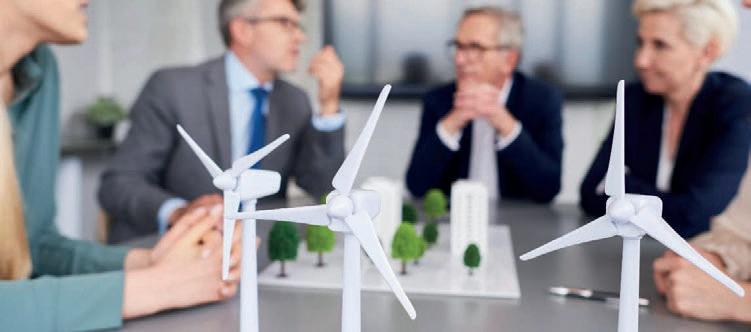
NT Chief Minister Eva Lawler emphasised the significance of the MoU, highlighting its role in attracting new investments in resource extraction, mineral processing, and carbon capture and storage.
“By signing an MoU with JBIC, the Territory Labor Government is attracting new investment into resource extraction, mineral processing and Carbon Capture and Storage,” Lawler said.
“This is supported by a strong industry development focus, that underpins
traditional sectors such as agriculture, mining and energy, maritime and tourism, to help grow local Territory business and jobs.
“There are clear opportunities to expand our relationship with our largest trading partner, to grow our economy and achieve net zero.”
The value of NT exports to Japan surged by 27.3 per cent to $7.7 billion in 2022-23, propelled by increased commodity prices and exports of metalliferous ores and metal scrap.
www.ecogeneration.com.au April 2024 ecogeneration | 13
The partnership will focus on financing energy and infrastructure projects.
The $140 million investment is split equally between the Commonwealth and WA Government.
Image: sticker2you/ stock.adobe.com
NEWS IN BRIEF
Image: gpointstudio/stock.adobe.com
WA offshore wind zone consultation opens
Consultations have been officially launched for the proposed Bunbury offshore wind zone, which will unlock thousands of renewable energy jobs and provide cleaner, cheaper energy for Western Australia.
The wind zone, strategically positioned 20km off the state’s coastline, spans an expansive 7674 square kilometres.
According to the Federal Government, the wind zone situates itself strategically to harness high-speed winds from the Indian Ocean, taking advantage of its close proximity to major energy consumers and the potential to generate a substantial 20GW of offshore wind power.
The consultations are open until May 3, 2024, with community information sessions
scheduled to run between March 19-21.
The anticipated development of the Bunbury zone is expected to yield a significant number of skilled and wellcompensated jobs, covering a spectrum from engineers and technicians to cable installers and administrative positions.
Proposed initiatives are expected to adhere to stringent criteria, including a commitment to utilising components manufactured in Australia and providing detailed engagement plans with local suppliers, aiming to stimulate economic benefits such as direct job creation and training opportunities.
Chris Bowen, Minister for Climate Change and Energy, said offshore wind energy not
only means new job opportunities across Western Australia but would also provide much-needed energy security.
“Offshore wind will be a critical new clean energy industry for Western Australians as electricity demand increases, helping to provide thousands of jobs along the way,” Bowen said.
“The Albanese Government is committed to genuine consultation on offshore wind –that’s why we want communities, industry and businesses to have their say on an offshore wind area off Western Australia from the very beginning.
“We encourage everyone to put in a submission and attend a community consultation session.”



14 | ecogeneration April 2024 www.ecogeneration.com.au
NEWS IN BRIEF
Image: PictMotion/stock.adobe.com


Revealing the state of the sector
With a positive set of results for rooftop solar and record-breaking figures for investment in utility scale storage, 2023 was another strong year for renewable energy in Australia. However, a slowdown in new financial commitments to large-scale renewable energy generation is cause for concern, writes
Kane Thornton, Chief Executive of the Clean Energy Council.

What a difference a year makes.
This time last year, I wrote about a mixed report card for Australian renewables; positive numbers in several areas backed up by a wave of increasingly positive political sentiment.
Reflecting on 2023, we saw very positive fi gures across rooftop solar and energy storage, but the slowdown in new fi nancial commitments to utility scale generation projects is cause for concern.
I believe clean energy has the policy settings and positive momentum to boom over the next few years as we progress toward the Federal Government’s target of 82 per cent renewable energy by 2030.
The Clean Energy Council released the 2024 edition of the ‘Clean Energy Australia’ report in mid-March, revealing the state of the sector and providing vital statistics and trends.
Total generation capacity added in 2023 reached 5.9 gigawatts(GW), substantially up from 5GW in 2022, and not far off the record of 6.3GW in 2021. That was comprised of 3.1GW from rooftop solar and 2.8GW from utility scale projects – 1.9GW of large-scale solar (up from 841 megawatts [MW] in 2022) and 942MW of wind (down from 1.4GW in 2022).
While rooftop solar didn’t quite reach the record-setting heights of 2021, it was still a
stellar year, with 337,498 solar systems installed across Australia (up from 315,499 in 2022).
These encouraging numbers demonstrate the value Australians see in rooftop solar and the benefits it brings, not just to the country’s decarbonisation effort, but to their energy bills and energy independence.
Dawn of the battery age
One area that saw an unexpected and welcome boom was utility scale storage. Investment in big batteries broke the billion-dollar mark for the fi rst time in Q2 2023, that record had already been broken and by Q4, making 2023 the
16 | ecogeneration April 2024 www.ecogeneration.com.au
INDUSTRY UPDATE | CEC CHIEF EXECUTIVE
The Clean Energy Council has released the 2024 edition of the ‘Clean Energy Australia’ report. Image: ArgitopIA/stock.adobe.com
strongest ever year for new fi nancial commitments in the large-scale storage space at $4.9 billion, including hybrid projects with storage elements ($4.7 billion for storage-only projects).
That is a 157.9 per cent increase on 2022, which reached $1.9 billion in new fi nancial commitments to large-scale storage. The combined capacity of large-scale storage projects reaching fi nancial commitment in 2023 totalled 3949 MW/9905 MWh.
It is difficult to pinpoint a single reason for this upturn in battery fortunes. In truth there are many reasons, including the improving scale and cost of battery solutions, higher wholesale prices and ancillary services revenues.
This level of new commitments is a clear signal that investors and developers are comfortable with the risks and strong business case for these solutions and are increasingly optimistic about their role in Australia’s future energy mix.
Utility scale generation slows
While fi gures for capacity added from generation projects in 2023 were up on 2022, which is a huge positive, the status of the investment landscape for large-scale generation projects is concerning.
Large-scale projects have been facing a complex and challenging landscape for new investment decisions, including a constrained grid, slow planning and environmental assessment processes in some jurisdictions, higher costs, and tighter markets for equipment and labour.
There was only $1.5 billion of new fi nancial commitments to large-scale
generation projects in 2023, significantly down on $6.5 billion in 2022, and no new wind projects reached fi nancial commitment (compared to six in 2022). This is a disheartening situation that needs to be addressed, and clearly the driving factor behind the Federal Government’s welcome decision to expand the Capacity Investment Scheme late last year.
In its ‘Renewables 2023’ report, the International Energy Agency reined in its growth forecast for renewables in Australia “due to continued policy uncertainty following early achievement of its LargeScale Renewable Energy Target (RET)”. The expanded Capacity Investment Scheme is intended to be the big policy-driver that replaces the RET, and if implemented correctly will hopefully give the large-scale sector the acceleration it needs.
In its ‘Draft Integrated System Plan’ released in late 2023, the Australian Energy Market Operator forecast Australia would need to install at least 6GW of utility scale generation annually if it was to reach the Federal Government’s target of 82 per cent renewables by 2030. The 2.8GW of largescale capacity added in 2023 is a good start but clearly well short of where we need to be, and the investment landscape must pick up if that number is to be dramatically increased.



Planning ahead
The fall in new investment commitments in utility scale generation is a leading indicator of the levels of new projects that will be competed and commissioned in the years ahead. So, despite the strong policy response from the federal and many state governments in 2023 (and early 2024), the levels of new large-scale generation coming online over the coming year is likely to be slower.
These are the topics and issues that will be the main focus of the clean energy industry throughout 2024.
The Clean Energy Council runs a series of essential industry events each year, and chief among those is the Australian Clean Energy Summit (ACES) in Sydney in July.
This is a jam-packed two days of discussion and debate that will be crucial to our industry going forward – a chance for industry leaders to connect with their peers, government, market bodies, community and regional leaders, and the fi nance sector.
Last year’s event was the biggest and most fully rounded we have hosted, and there is every reason to believe it will be even better this year, particularly given how pivotal the next decade will be for renewables in Australia. Join us in July to be part of the clean energy conversation and discuss the best ways forward for the industry


CEC CHIEF EXECUTIVE | INDUSTRY UPDATE
Kane Thornton has more than a decade of experience in energy policy and leadership in the development of the renewable energy industry. His column is a regular feature in ecogeneration, where he analyses industry trends and explains the impacts of federal and state renewable policies on the energy sector.
www.ecogeneration.com.au April 2024 ecogeneration | 17 Renewable Energy Training RTO: 0416. IHE: PRV12129. CRICOS Provider Code: 00012G. Multiple start dates available throughout the year at our Moorabbin campus. Scan the QR code to find out more, or call 1300 639 888 to apply now. Gain new skills for growing opportunities in the renewable energy market. Electricians and engineers interested in upskilling or gaining accreditation can tailor their training to suit their career goals at Holmesglen Institute’s Renewable Energy Centre of Excellence. Industry experts deliver our nationally accredited renewable energy short courses with online and face-to-face hands-on practical workshop sessions. You can study: •Grid Connected PV systems•Battery Storage•Stand-Alone Power Systems
The
accreditation

provider for installers and designers has changed
The Clean Energy Council reflects on its time as the solar accreditor, and the Clean Energy Regulator’s rigorous application and evaluation process to approve Solar Accreditation Australia for the role.
On 29 February, the Clean Energy Regulator (CER) approved Solar Accreditation Australia (SAA) as the new installer and designer accreditation scheme operator under the Small-scale Renewable Energy Scheme (SRES).
How did the CER choose SAA?
The CER undertook a rigorous application and evaluation process to approve SAA.
After operating as an administrator for over 16 years, the Clean Energy Council (CEC) chose not to apply to be an accreditation scheme operator and its services have now ceased. The CEC deeply considered how its technical experts can support the industry amid complex and competing priorities, including standards changes and regulatory reforms.
How is the CEC supporting the transition?
Over the past few months, the CEC has worked closely with the CER and SAA to ensure a smooth handover for the benefit of accredited installers, the rooftop solar industry, and consumers. A successful transition is crucial and the CEC remains committed to supporting the industry.
Important information for installers and designers
Scope of accreditation:
• The SAA is now responsible for the accreditation of electricians who design and install small-scale solar, wind and hydro systems incentivised by the SRES
• The SAA will accredit battery installers

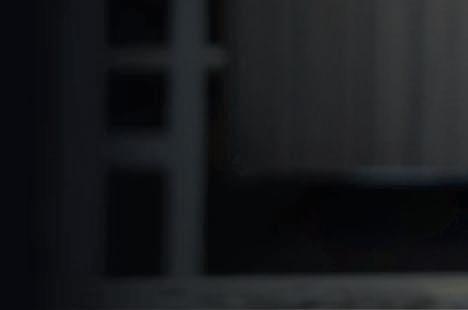
Make the switch:
• If you haven’t transferred your accreditation, you can visit the SAA website (saaustralia.com.au) and apply to transfer by 29 May or before their CEC accreditation expires, whichever is earlier
• Accredited persons must transfer to the SAA by 29 May to maintain accreditation and remain eligible under the SRES
Access to the CEC installer portal:
• You will continue to have access to the CEC installer portal until May. To allow time to access any details, you may need to transfer your accreditation
• myCEC access offering technical information and support has been extended until July, free of charge
18 | ecogeneration April 2024 www.ecogeneration.com.au CLEAN ENERGY COUNCIL | ACCREDITATION




CEC reflection
The CEC is proud of the role it has played in building robust installer and accreditation programs, alongside administering the New Energy Tech Consumer Code (NETCC) program for retailers, and product listing program for manufacturers.
The rooftop solar industry in Australia is world-leading and over the past 16 years the CEC team has played a critical role in upholding the regulatory framework to drive best practice and improve industry behaviour to ensure customers are treated fairly and honestly.
Together with the industry, it has been building significant social license with communities as they benefit from savings on power bills.
Transitioning out of the role of administering accreditation allows the CEC to focus on strong advocacy for the solar industry, as well as increased support for installers to ensure they have
access to quality training, that they are kept up to date on latest industry developments, and that they feel supported to navigate the complex industry standards and requirements.


www.ecogeneration.com.au April 2024 ecogeneration | 19
ACCREDITATION | CLEAN ENERGY COUNCIL
Pallavi Guha, Clean Energy Council Director, Regulation Industry Programs and Advisory Services.
The CER undertook a rigorous application and evaluation process to approve SAA.
Image: Clean Energy Council. Image: Beton Studio/stock.adobe.com.au


Greener horizons for the sunshine state

The future of Queensland’s energy sector is brimming with endless clean, green potential. ecogeneration takes a look at the current renewable projects in the state.
Renewable energy isn’t just good for the environment; it’s also a booming economic force, creating jobs, attracting investments, and stimulating regional development. ecogeneration explores the major renewable energy projects in Queensland.
MacIntyre Wind Farm Precinct
The MacIntyre Wind Farm Precinct, built by Acciona, is situated in the South-West of Warwick, Queensland, Australia, on land primarily utilised for sheep farming. The location was chosen for its consistent wind exposure, making it a suitable resource for the development of the wind farm.
With a planned capacity of 1026MW, the wind farm will feature 180 Nordex Delta wind turbines. This makes the project the largest onshore wind farms globally.
On January 2024, project developer Acciona Energia and contractor Holcim announced they completed the pouring of MacIntyre Wind Farm’s concrete foundations for its 162 wind turbines, marking a significant milestone in the 923MW project.
The construction of MacIntyre Wind Farm Precinct began in 2022, with the wind farm expected to become fully operational by 2024.
The total investment in the MacIntyre Wind Farm Precinct is $1.96 billion. Beyond economic contributions, the wind farm aligns with Queensland’s decarbonisation strategy and climate change mitigation efforts.
According to the Queensland Government, the project is anticipated to result in a Community Enhancement Program, strategically delivering added value to the
local region over the project’s life cycle. It is also expected to provide significant economic activity across the Goondiwindi, Southern Downs, and Toowoomba Regional Council areas. Local spending during construction is projected to exceed $500 million.
Steven Miles, Queensland’s Premier said once operational the MacIntyre Wind Farm Precinct is expected to generate enough renewable electricity to supply about 700,000 Queensland homes.
“The MacIntyre Wind Farm Precinct is set to provide up to 400 local jobs during construction, with an additional 240 jobs for the construction of the 64km transmission line, and 14 fulltime jobs once in operation,” Miles said.
“Acciona also expects its local spend during construction to exceed $500 million, which is great news for the Southern Downs, Goondiwindi, and Toowoomba communities.”
Western Downs Green Power Hub
Situated near Chinchilla in the Western Downs region of Queensland, the Western Downs Green Power Hub is located 22km southeast of Chinchilla. The site spans 1500 hectares in Barunggam country, 300km northeast of Brisbane.
The Western Downs Green Power Hub is a 460 MW solar farm project developed by Neoen, a French renewable energy producer.
When complete, it will add 400MW of renewable energy into the grid with Queensland Government owned energy generator and retailer CleanCo signed up to take 320MW.
The project, utilising 72-cell bi-facial solar
modules, incorporates advanced tracking systems to efficiently follow the sun. It also includes a battery with an energy storage capacity of up to 200MW.
Western Downs Green Power Hub’s solar farm is projected to become operational in 2023, with the battery component scheduled to commence operations in 2024.
With an estimated investment of $600 million, the Western Downs Green Power Hub is anticipated to deliver an annual economic benefit of around $32 million to the Queensland economy.
Additionally, the solar farm is expected to offset approximately 864,000 tonnes of carbon dioxide emissions annually. The project’s electricity generation, exceeding 1080GWh per year, will power around 235,000 homes.
Last Christmas, CleanCo announced its collaboration with Coles to provide 95 per cent of the latter’s electricity needs in Queensland.
According to Tom Metcalfe, CEO of CleanCo, the renewable energy generated by the Western Downs Green Power Hub will supply some of CleanCo’s biggest customers including Coles and BHP.
“Projects like these complement CleanCo’s portfolio of fast ramping, flexible gas and hydro generators to provide our customers with 24/7 reliable clean energy,” Metcalfe said.
“We are proud to support renewable energy projects like the Western Downs Green Power Hub that deliver great local employment opportunities and economic outcomes in regional Queensland.”
“The renewable solar energy generated here
20 | ecogeneration April 2024 www.ecogeneration.com.au QUEENSLAND REGION REVIEW
Ariel view of a solar farm.
Image: Frankie/ Stock.adobe.com
in Queensland’s Western Downs will contribute to the long-term sustainability of Queensland industries and communities, helping them to thrive in a net zero future.”
CQ-H2 Hydrogen Project
The Central Queensland Hydrogen Project (CQ-H2) is located near Gladstone, which has been identified as the hub for strategic development. The region possesses attributes conducive to global participation in green hydrogen production, including a deep-water port, expansive space for expansion, and robust electricity and gas transmission infrastructure.
Led by Stanwell Corporation, the project aims to produce 200 tonnes of renewable hydrogen per day by 2028, scaling up to an impressive 800 tonnes per day by the early 2030. The venture incorporates advanced technologies to facilitate the large-scale production of green hydrogen.
The CQ-H2 project anticipates substantial economic and environmental advantages. At its peak, it is poised to generate over 8900 new jobs, contributing $17.2 billion in hydrogen exports and adding $12.4 billion to Queensland’s Gross State Product over a 30year lifespan. The project aligns with Queensland’s commitment to becoming a renewable energy superpower.
In December 2023, the Australian Renewable Energy Agency (ARENA) announced that CQ-H2 and five other applicants had been shortlisted for a $2 billion Hydrogen Headstart Program. This represented a total electrolyser capacity of over 3.5GW, making CQ-H2 among the largest renewable hydrogen projects in the world.
Mick de Brenni, Queensland’s Minister for Energy and Clean Economy Jobs said CQH2 would bring new jobs in manufacturing and help the agricultural sector to decarbonise.
“Over time, eliminating fossil fuels from Queensland supply chains and replacing them with clean energy means our agricultural jobs will remain safe in a carbon emissions conscious marketplace,” de Brenni said.
Pioneer-Burdekin Pumped Hydro Project
Situated in the South-West of Warwick, Queensland, the Pioneer-Burdekin Pumped Hydro Project is set to become the largest pumped hydro scheme globally.
Proposed in two stages to reach completion by 2035, the project aims to deliver 5GW of clean, reliable power supply and storage.
The innovative pumped hydro technology acts as a giant water battery, using electricity

to pump water from a lower reservoir to an upper reservoir during periods of low energy prices. This stored energy is released when needed, generating hydroelectricity through turbines.
The construction activities of PioneerBurdekin have commenced, with a planned completion timeline by 2035.
Awarding over 3000 jobs during construction, the Pioneer-Burdekin project plays a pivotal role in the $62 billion Queensland Energy and Jobs Plan. It is expected to provide 24/7 clean and reliable power, generating 5000MW for 24 hours, equivalent to about half of the state’s peak usage.
According to Queensland Hydro, the investigation phase is well underway at its proposed Pioneer-Burdekin Pumped Hydro Project site.
“Works such as geotechnical drilling help us to avoid, minimise, and offset potential adverse impacts to local ecosystems and the environment,” Queensland Hydro said in a LinkedIn post.
Minister de Brenni said the PioneerBurdekin Pumped Hydro Project is the cornerstone of the Queensland Energy and Jobs Plan and will be the largest pumped hydro scheme in the world.
“This mega pumped hydro project will act like a giant battery, and when connected to our Queensland SuperGrid, will underpin the reliability of our publicly owned grid by storing the energy generated by our renewable energy zones,” de Brenni said.
“It’s regions like Mackay that are at the centre of this Queensland’s renewable energy transformation – which will unleash new industrial jobs in hydrogen, renewables, manufacturing, and critical minerals.”
Townsville Region Hydrogen Hub
The Townsville Region Hydrogen Hub is Queensland’s latest major renewable energy project, announced only in January 2024.
Located in North Queensland, it is considered a key investment by the Federal Government,
with up to $70 million allocated for the development.
The initial stage of the hub aims to produce 800 tonnes of green hydrogen annually, catering to local industry and zero-emissions transport. The facility includes a 17.6 MW domestic production unit integrated with renewable energy generation and battery storage.
The hub plans to scale up to approximately 3000 tonnes for domestic use and exceed 150,000 tonnes for export.
Construction of Townsville Region Hydrogen Hub is slated to commence in the coming year, with a targeted completion in 2026. Its initial commercial operations are expected to begin in 2027.
The project is anticipated to create a minimum of 200 direct job opportunities during construction, benefitting local electricians, plumbers, fitters, and concreters. Ongoing roles in technical and engineering capacities will contribute to sustained regional employment.
The hub aligns with Australia’s renewable energy ambitions, offering green hydrogen for local use and export.
With a combined investment exceeding $137 million, including up to $70 million from the Commonwealth, the initiative signifies a collaboration between Australia and Germany, leveraging German hydrogen technology expertise and Australia’s potential as a renewable energy leader.
According to Prime Minister Anthony Albanese, renewable hydrogen is a game changer, opening the door to green metals, green fertiliser, green power and supporting industrial decarbonisation.
“The whole world needs renewable hydrogen, and regional Australia is ready to provide it,” Albanese said.
“With its port, expertise in exports and access to Queensland’s abundant solar resources, Townsville is ideally placed to help power the world with Australian renewable energy and create jobs in regional Australia.”
www.ecogeneration.com.au April 2024 ecogeneration | 21 QUEENSLAND REGION REVIEW
Engineers examining wind turbines.
Image: Martin Barraud/Caia Image/stock.adobe.com
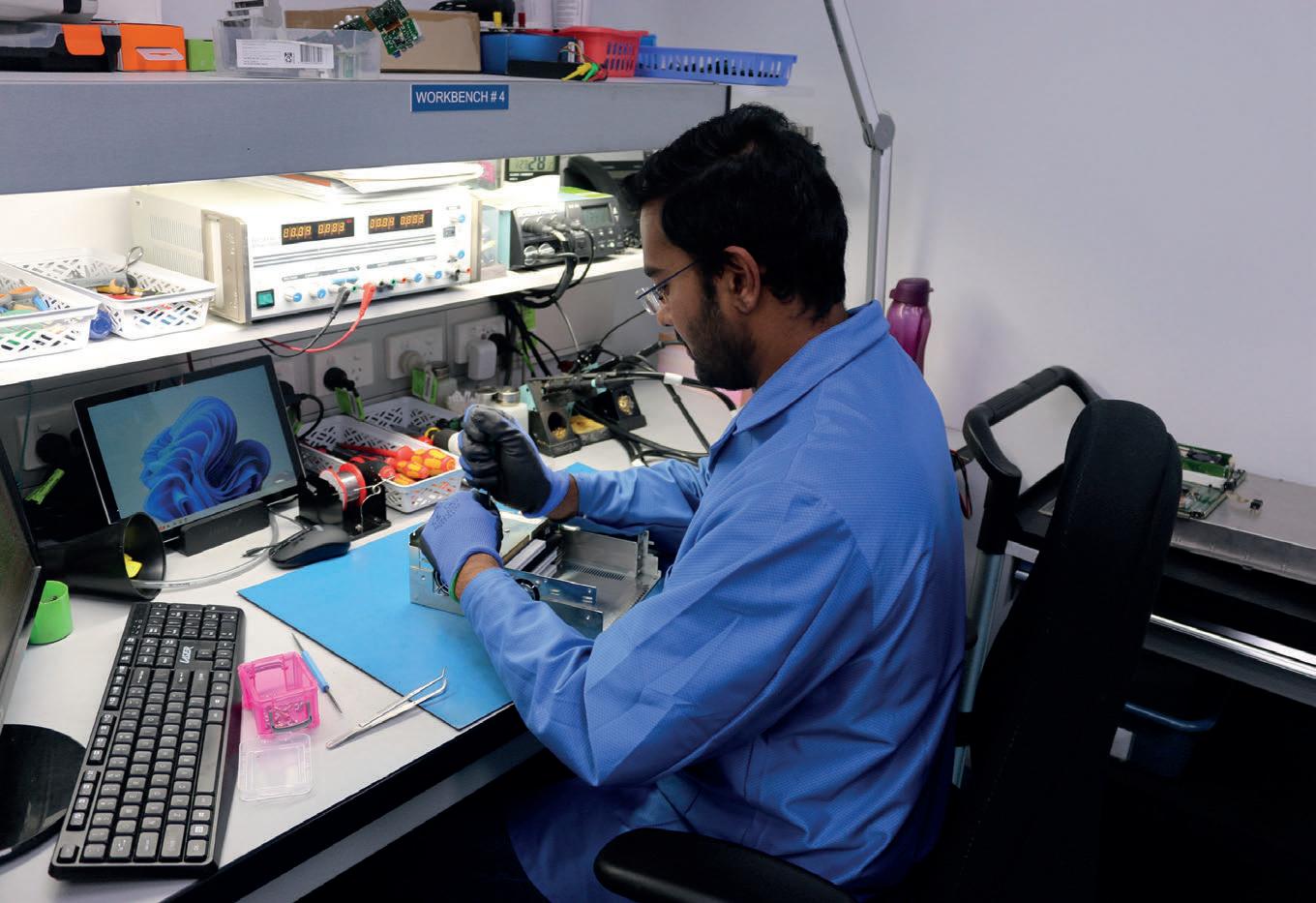
Rejuvenating your industrial electronic assets
As Australia sails towards a greener future, the industry faces a significant challenge, but Rom-Control is confident its solutions will improve equipment life and reliability
The maintenance and repair of ageing electronic equipment represented major concerns for many businesses operating in various industries, as obtaining a spare part from overseas when facing a breakdown caused by the failure of electronic equipment can result in long waiting periods and high costs.
This is where Rom-Control, an Australianbased electronic engineering company, steps in, offering innovative and sustainable solutions that are revolutionising the way the industry approaches equipment lifecycle management and obsolescence, while also contributing to the reduction of CO₂ emissions.
Established in 2007, Rom-Control has carved a niche for itself as a leading provider of repair and refurbishment services for
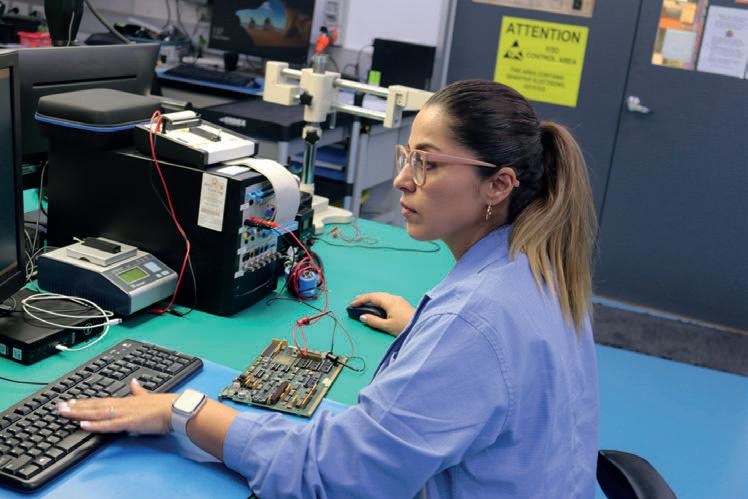
22 | ecogeneration April 2024 www.ecogeneration.com.au COVER STORY | ROM-CONTROL
Rom-Control engineer diagnosing an electronic device.
Rom-Control’s engineers have developed specialised techniques to diagnose and repair equipment.
Images: Rom-Control


industrial electronic equipment.
With a team of highly skilled engineers and a success rate of 98 per cent, the company has garnered a reputation for excellence, serving more than 1000 clients across Australia, New Zealand, and the Asia-Pacific region.
At the helm of Rom-Control is the founder Michael Horovitz, a veteran in the field of process control, electrical engineering, and consultancy. His extensive experience in industries such as power generation, chemical manufacturing, and food and beverage maintenance and engineering has given him a unique perspective on the challenges faced by companies relying on electronic equipment to drive their production activity.
“I realised there was a gap in Australia, where we don’t manufacture much equipment locally,” Horovitz said.
“When companies purchase equipment with process control systems, eventually the electronics will fail. As the original equipment manufacturers (OEMs) cease to support old equipment, we offer a plug-and-play solution by repairing and refurbishing the failed modules at a fraction of the cost of buying new equipment.”
Rom-Control’s approach to repair and refurbishment is ground-breaking. Unlike

traditional methods that rely heavily on schematics and documentation from OEMs, Rom-Control’s engineers have developed specialised techniques to diagnose and repair equipment without such resources.
This allows them to work on a wide range of equipment, including power electronics and renewable energy components such as converters and inverters, control systems,

variable speed drives, and more.
One of Rom-Control’s most significant achievements is becoming an approved supplier for Vestas, a leading European manufacturer of wind turbines.
This partnership has opened doors for Rom-Control to receive repair jobs from various wind farm operators and maintenance providers across Australia, even though the farms under their control comprises of equipment manufactured by other than Vestas
“Our engineers understand the functionality, fault-find and repair different electronic circuits at component level,” Horovitz said. “We build customised testing rigs for each brand to simulate real-life conditions and ensure our refurbished units perform as intended.”
The company’s commitment to sustainability and extending the lifespan of electronic equipment is exemplified in a recent project with a major pharmaceutical company.
The client had a control system from the 1980s that was still operational but an upgrade was not feasible under the current financial constraints. Rom-Control was approached and asked to provide a solution that would ensure the equipment would be in a solid position to continue being used for another 10 years.
Rom-Control offered its proactive refurbishment service, auditing the entire system, identifying critical components, and refurbishing or replacing them on a rotational basis.
This approach enabled the client to keep the system running for another 10 years without costly replacements.
www.ecogeneration.com.au April 2024 ecogeneration | 23 ROM-CONTROL | COVER STORY
The Rom-Control team.
Rom-Control Managing Director Michael Horovitz.
“It’s hard to estimate the exact savings, but we potentially saved them millions compared to the price of purchasing a new system,” Horovitz said.
Rom-Control’s approach to quality control is equally impressive. All components used in the repair and refurbishment process are brand new and tested thoroughly before installation.
The company has invested in specialised equipment to detect counterfeit parts, ensuring that only genuine components are used in customer equipment.
In addition, Rom-Control has established relationships with various component manufacturers around the world, allowing them to quickly source parts, even for obsolete equipment.
As the renewable energy industry continues to evolve, Rom-Control is wellpositioned to meet the anticipated surge in demand for repair and refurbishment services. The company’s systems-based approach and flexible business model allow for scalability, while continuous investment in training and advanced testing equipment ensures that its workforce remains ahead of the curve.
“Our core strength lies in our ability to repair any electronic equipment at the component level, regardless of brand or intended function,” Horovitz said.
“As long as there are electronics involved, we can provide cost-effective repair solutions to extend the lifespan of the equipment sustainably.”
In an industry that has traditionally relied on a “replace and discard” approach, RomControl’s solutions offer a feasible and costeffective alternative. By extending the lifespan of electronic equipment and reducing waste, the company is not only contributing to the bottom line of its clients but also promoting a circular economy and minimising the environmental impact of the renewable energy sector.
“For decision-makers in the renewable industry, partnering with Rom-Control represents a strategic investment in sustainability, cost savings and operational efficiency,” Horovitz said.
With its unique expertise, cutting-edge techniques, and commitment to quality, Rom-Control is poised to play a pivotal role in shaping the future of the renewable energy industry, one repaired component at a time.
For more information, visit rom-control.com.au/contact-us
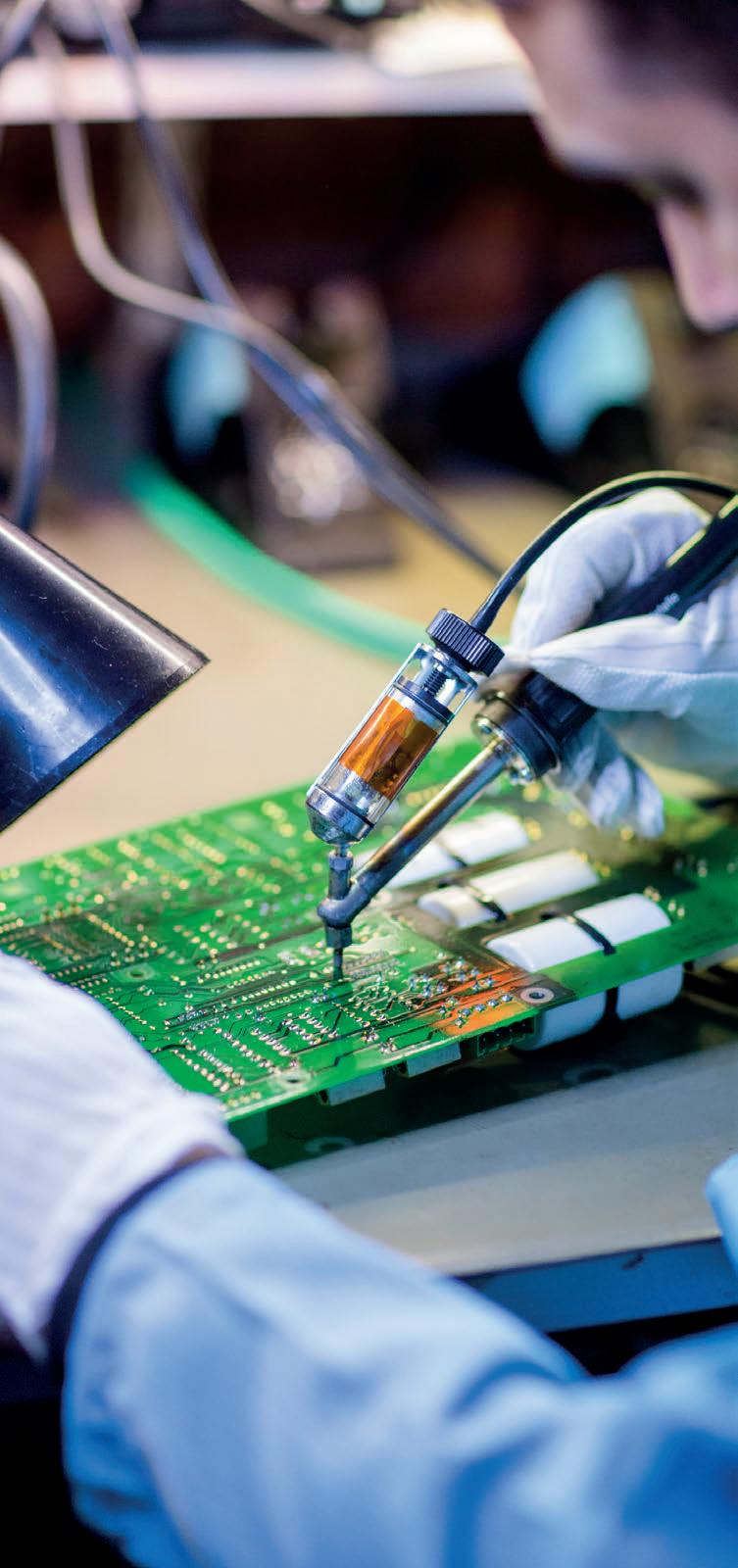
and repair equipment.
24 | ecogeneration April 2024 www.ecogeneration.com.au COVER STORY | ROM-CONTROL
Rom-Control’s engineers have developed specialised techniques to diagnose
#AllEnergyAU
all-energy.com.au
23 -24 October 2024
Melbourne Convention and Exhibition Centre
Australia’s Largest Clean Energy Event: Your gateway to a clean energy future.
Electrifying Days 2
11,563 Unique Visitors in 2023
400+
Industry Leading Exhibitors
400+ World Class Speakers
With an expanded EV and infrastructure zone, meet leading exhibitors such as Tesla, Sungrow, SMAPEE, BYD, Delta, Sonnen, Growatt, SMA, Goodwe & more. Registration for All Energy Australia opens in July and is completely FREE. This also includes access to All Energy 365, your year-round education hub. LEARN









































MORE
Taking Australia into a greener future
As Australia forges ahead to a net-zero future, the need for innovative and scalable renewable energy solutions has never been more pressing.
At this key transition point on the path to a clean-energy future, Pacific Green, a global leader in the renewable energy sector, has entered Australia with a mission to accelerate the netzero transition worldwide.
With a long track record in the UK, where the company has successfully delivered one operational battery park totalling 100 megawatt hours (MWh) and has another 375MWh facility under construction, Pacific Green has set its sights on the growing Australian market.
“We are positioning Pacific Green to become one of the largest battery park developers in the Southern Hemisphere,” Pacific Green Australia Managing Director and Chief Executive Officer Joel Alexander told ecogeneration

Pacific Green is targeting more than 12GWh of battery energy storage capacity across four global markets; Australia and Italy remain hotspots for significant pipeline expansion, with the company also seeking to recharge its origination portfolio in the maturing UK market, as well as taking its first steps into the nascent Polish market.
Leading the charge in Pacific Green’s Australian ventures are two ground-breaking projects: the Limestone Coast Energy Park in South Australia and the Portland Energy Park in Victoria.
The Limestone Coast Energy Park, a mammoth 1.5 gigawatt-per-hour (GWh) battery facility, will be located adjacent to the South East Substation, a critical interconnector between SA and Victoria. This strategic positioning will not only provide
vital grid stability and security but also enable the energy park to serve as a backup power source, ensuring uninterrupted energy supply to both states.
The Portland Energy Park in Victoria, poised to become the largest battery energy storage system in Australia and Asia at 1GW/2.5GWh, will play a pivotal role in supporting existing and proposed renewable energy projects within the state’s Southwest Renewable Energy Zone, as the nearby Alcoa smelter accounts for approximately 10 per cent of Victoria’s energy demand.
The significance of these large-scale battery storage projects cannot be overstated, as they hold the key to enabling a more stable and reliable renewable energy grid moving forward.
“Our battery parks will provide relief
26 | ecogeneration April 2024 www.ecogeneration.com.au PROEJCTS | PACIFIC GREEN
against wholesale volatility and contribute to overall peak price reduction, ” Alexander said.
To underline the point, Alexander cited modelling from Cornwall Insights Australia, which suggested that the Portland Energy Park could result in 3.8 per cent reduction in wholesale energy costs for Victorian households alone.
Moreover, these battery facilities will act as catalysts for increased renewable energy generation, enabling solar and wind farms to remain online during periods of low or negative pricing by providing a constant load for charging the batteries.
“Where our battery can soak up more solar and wind, and those solar and wind farms can stay online to support the transition to netzero, that’s a really positive outcome,” Alexander said.
Pacific Green’s success in Australia is underpinned by its ability to leverage international expertise and resources from its global operations.
The company’s UK team brings vital knowledge in corporate finance and project bankability, ensuring each project meets the stringent criteria required to secure nonrecourse project financing.
This expertise, coupled with Pacific Green’s strategic partnership with leading battery manufacturers in China, including a


dedicated team of over 30 employees in Shanghai, provides a competitive edge in supply chain management, quality control, and timely delivery of project-critical equipment to site.
Navigating the complexities of developing and constructing large-scale renewable energy infrastructure projects is no small feat, but Pacific Green is well-equipped and ready to handle the challenge.
One of the most significant challenges lies in navigating the complexities of grid connections and power systems.
“The Australian market is experiencing a lot of activity at the moment, and the power system studies required to achieve GPS (generator performance standards) are complex and time-consuming,” Alexander said.
To address this issue, Pacific Green is leveraging proven technologies and fostering open and transparent relationships with network operators, helping to ensure compliance with technical characteristics and timelines.
Another area in which Pacific Green takes particular pride is its collaboration with traditional owners. In the case of the Portland Energy Park, the company has worked closely with the Gunditjmara people, redesigning aspects of the project following site visits and consultations.
“We believe in engaging with key stakeholders and community members as early in the planning process as possible,” Alexander said. “In turn, this leads to a really positive outcome for not only Traditional Owners but also the broader community.”
Community engagement is a cornerstone of Pacific Green’s approach, with the company hosting dedicated community information
sessions to engage with community members and discuss feedback from local residents.
“There’s an overwhelming sense of support across both communities,” Alexander said. “We are committed to being open and transparent with each of our communities regarding what we’re doing, why we’re doing it, and articulating the community benefits of each project.”
Among these benefits is the creation of regional employment opportunities, with Pacific Green committed to engaging local contractors, suppliers and businesses where possible. The company is currently in the process of determining work packages that will offer opportunities ranging from hospitality and accommodation to site works and groundworks.
Pacific Green’s commitment to Australia’s energy transition extends far beyond the construction of battery storage facilities. The company is dedicated to fostering a sustainable future through strategic partnerships, community empowerment, and innovative solutions.
By collaborating with indigenous communities, local businesses and industry experts, Pacific Green ensures its projects contribute not only to a cleaner energy future but also create long-lasting positive impacts on the communities they serve.
With a global footprint and a track record of success, Pacific Green is poised to play a pivotal role in propelling Australia towards its net-zero targets. As the nation embraces a future powered by clean, sustainable sources, the company is leading the charge towards a greener, more resilient Australia.
For more information, visit pacificgreen.com/aus
www.ecogeneration.com.au April 2024 ecogeneration | 27 PACIFIC GREEN| PROJECTS
Inside Pacific Green’s Richborough Battery Energy Park located in the UK.
Images: Pacific Green
Pacific Green aims to become one of the largest battery park developers in the Southern Hemisphere.
The critical role of social procurement
Establishing and maintaining ‘social licence’ is critical for Australia’s ability to deliver our massive renewable energy project pipeline. Social procurement is the fundamental vehicle that will deliver on and demonstrate the positive social, economic and environmental impacts that will underpin the achievement of ‘social licence’ through our energy transition.
From solar to onshore and offshore wind, batteries, hydrogen, transmission, and everything in between, there are enormous opportunities in renewable energy. However, the speed and scale of energy investment needed in Australia to reduce its dependence on fossil fuels and meet the targets is challenging.
According to Chris Newman, Managing Director at ArcBlue Consulting, the complexity of a diverse and evolving regulatory environment is challenging for all involved, and more work is needed.
“To establish common approaches across different renewable sectors and jurisdictions,” he said.
The increasing competition in the global supply chain highlights the critical importance of building local capacity, investing in procurement and supply chain expertise and early planning.
“Australia is not the only country in the world who are working hard to try to transition our economy and we don’t yet have the strength of local manufacturing. We’re competing with other buyers who are often doing bigger projects and are closer to the suppliers in Asia, Europe, and North America,” Newman said.
Achieving social licence
A key challenge for consideration is how to achieve social licence in regional communities, enabling the delivery of critically required infrastructure, and addressing workforce shortages and supplier capability gaps.
“Renewable energy projects are often promoted as environmentally friendly and socially responsible alternatives to traditional energy sources,” Newman said.
“Maintaining a social licence reinforces this image and aligns with the values of environmentally conscious consumers. Governments and regulatory bodies are increasingly considering community attitudes and social acceptance when granting permits
and approvals for renewable energy projects.
“By demonstrating strong social backing for projects, they are more likely to navigate regulatory processes smoothly, reducing the risk of delays or legal challenges. Investors recognise that community buy-in has a huge impact on the success of a project and its financial viability and will view a project more favourably if it can demonstrate strong social support and acceptance in the community.”
For Newman, “social licence is shaped by how a proponent plans, builds and manages infrastructure, as well as the perceived impacts and opportunities associated with the project”.
“Social licence is critical to the success of renewable energy projects, and building acceptance and support for each project will be fundamental to establishing and maintaining community support for the broader renewable energy transition,” he said.
“It is important to acknowledge that the social licence for a project is not uniform among all stakeholders. Different groups may
hold varying perceptions and levels of support. Hence, understanding that social license exists on a continuum rather than a simple binary assessment is crucial.”
Establishing social licence can be more challenging for renewable energy projects. These projects are being largely developed in regional Australia where they are subject to intense local scrutiny, and unlike traditional infrastructure projects such as roads, rail, and hospitals, the direct benefit to the affected communities is less clear.
“A genuine commitment to social licence requires an understanding of stakeholder perspectives, a strategic approach and proactive engagement. Best practice involves establishing a comprehensive framework in a place-based approach for and with the community that is communicated, measured, and reported on through the lifecycle of the project(s),” Newman said.
The importance of social procurement
While the importance of achieving social

28 | ecogeneration April 2024 www.ecogeneration.com.au SOCIAL LICENCE | ARCBLUE
Image: Studio-FI / stock.adobe.com
Social procurement is the fundamental vehicle that will help deliver future renewable projects.
licence is gaining traction, there is still a misconception that social licence should focus only on community consultation, land holders and issue management. While these are vital concerns, there needs to be a broader focus on maximising and demonstrating the specific achievement of local, economic, social and employment impact through the delivery of these projects.
“Social impact assessment processes have told us that achieving sustainable local economic employment, and broader positive social impacts are critical drivers for community acceptance and the achievement of social licence,” Newman said.
Social procurement is becoming increasingly well integrated into publicly funded infrastructure projects across Australia, yet it is inconsistently applied and not well understood in the renewable energy sector.
Social procurement is not only setting targets and requirements for suppliers, but a comprehensive approach is also needed to establish a shared commitment to a collaborative social impact framework between the proponent, key contractors, and partners.
Social procurement needs to be integrated at each stage of the development process, ensuring social and local economic objectives form part of detailed planning in the scope, feasibility, and design stages.
In the delivery and operation stages, the achievement and demonstration of social and local economic impact is vital. Strategies and action plans need to be resourced and executed with a consistent focus on

measurement and reporting, management of community expectations, and communication about the project’s activities and social and local economic impacts.
“Social procurement enables the integration of service delivery plans and goals such as Aboriginal participation, workforce development, inclusive employment, and local and social benefit supplier engagement to maximise the demonstrable benefit to the community,” Newman said.
There is also a critical opportunity to leverage and integrate community investment schemes to support local partners in delivering or enhancing workforce and local supplier programs that will create a long-term legacy for the community.
As Australia ramps up its efforts to meet the country’s decarbonisation and sustainability targets, hundreds of renewable energy projects are reaching a critical stage in their developments.
The speed and scale of development requires a national commitment to social procurement. This will not only underpin the social licence that is so critical to this transition but will ensure we take advantage of this unique opportunity to deliver a sustainable positive legacy for the communities where these projects are taking place.
Engaging in three ways
Established in 2013, ArcBlue is a specialist Asia Pacific procurement and supply chain consulting firm, part of Bain & Company. ArcBlue is experienced in delivering procurement, supply chain and social impact

for infrastructure and renewable energy projects.
One of ArcBlue’s key areas of expertise is in delivering social impact, working with governments, proponents, and head contractors, at all levels of the supply chain and key local partners and stakeholders in three distinct ways:
• Organisational policy and strategy –integrating a commitment to achieving social value through all aspects of organisational practice.
• Place-based approaches and programs - bringing stakeholders together to strengthen local eco-systems that can help deliver on the promise of social procurement. This includes the design and delivery of place-based collaborative programs such as Q-Seed to drive local economic development and address disadvantage through local and social procurement, and inclusive employment.
• Project solutions – integrating the achievement of social value into all aspects of a project from design and planning through to implementation and operations. Working with both private and public sector organisations who are delivering major projects to implement practices to actively target, support, grow and measure inclusive employment, and local and social procurement outcomes.
For more information, visit arcblue.com or contact Chris Newman, +61 412 318 384, or chris.newman@arcblue.com.au.


www.ecogeneration.com.au April 2024 ecogeneration | 29 ARCBLUE | SOCIAL LICENCE
Image: ArcBlue
Social procurement needs to be integrated at each stage of the development process.

Australia’s electric vehicle juncture
As global adoption of electric vehicles rapidly accelerates, spurred by ambitious climate policies and lucrative industry incentives, Australia finds itself at a critical moment in time.
While Australia has lagged in implementing comprehensive Federal Government incentives compared to other major economies, this deficit paradoxically highlights the enormous opportunity before it.
Daniel Bleakley, Senior Energy and Technology Transition Advisor at Next System spoke with ecogeneration about how in comparison to many countries, Australia lacks nationwide incentives for purchasing new electric vehicles (EVs).
“However, this gap represents a greenfield space for impactful policymaking to rapidly accelerate our EV transition,” Bleakley said.
The US has taken the lead through its $US7500 federal tax credit for EV purchases, turbocharging consumer demand. While a few Australian states initially offered modest rebates, these have since been cut back or concluded, removing vital demand levers.
Yet Australia’s lack of a cohesive national EV strategy should not be viewed solely as a shortcoming, but as an open runway, said Bleakley, as the country can leverage insights from successful policies abroad while avoiding costly missteps through careful planning and visionary regulation.

Recent data shows Australia’s EV market is showing promising signs of growth. EV sales more than doubled in 2023 to 87,217 vehicles, capturing 7.2 per cent of the total market, according to the Federal Chamber of Automotive Industries (FCAI).
When including hybrids, electrified models accounted for an impressive 16.2 per cent share.
This momentum has continued into 2024, with EVs achieving a record 9.6 per cent market share in February. Over 10,000 full battery EVs were sold that month alone,
led by Tesla’s Model 3 as the nation’s bestselling passenger vehicle.
“The recent sales figures demonstrate the pent-up demand for EVs in Australia,” Bleakley said.
“Combine that with our mineral wealth and renewable energy, and we have all the ingredients for an EV manufacturing powerhouse – if we get the policies right.”
According to Bleakley, the national fuel efficiency standards, announced by the Federal Government earlier this year, would mark an initial step in the right direction.
30 | ecogeneration April 2024 www.ecogeneration.com.au
ELECTRIC VEHICLES | AUSTRALIA EV OVERVIEW
Many countries have provided considerable incentives for EV.
Image: CStock/stock.adobe.com

“Manufacturers will have to sell more and more efficient vehicles, and ultimately EVs, to meet the standards,” he said. “It’s Australia’s biggest pro-EV policy yet, but just an opening move.
“By forcing automakers to slash fleet emissions over time through stiff penalties, the policy will compel them to import and produce more EVs for the Australian market.
“Exempting EVs from import duties and luxury car taxes would also provide an immediate demand boost,” Bleakley suggested, pointing to Norway’s longstanding tax holidays as a blueprint, adding Australia could also learn from Norway about other benefits like toll exemptions, allowing EVs in bus lanes, free parking, etc.
Bleakley further highlighted Australia’s need for long-term plans if it wants to grow its EV industry, giving China as an example as the country now controls around 70 per cent of the global EV supply chain and resulted from good policy decisions that China made a decade ago.
But the real prize for Australia, as Bleakley pointed out, is moving downstream into battery production and manufacturing.
He cited the US’s Inflation Reduction Act, with its tax credits for EVs and battery manufacturing, as a model for catalysing domestic industry. Similar incentives could transform Australia’s mineral wealth into value-added revenue from refined battery materials and cell production.
Estimates suggest a fully built-out battery supply chain in Australia could generate over 30,000 new jobs and $7.4 billion annually in economic activity.
“We’re perfectly positioned, with an abundance of cheap renewable energy too,” Bleakley said.
“Tax credits for mineral refining and battery ‘giga-factories’ would be gamechanging, letting us move up the EV supply chain.”
From this strong footing in midstream battery components, Australia could then potentially broaden into downstream transportation electrification.
While large-scale passenger EV manufacturing may prove too competitive initially, Bleakley sees opportunities in commercial vehicle electrification like mining trucks, leveraging the Australia’s relevant expertise.
However, Bleakley said one area where
Australia may face steeper challenges is the highly sophisticated software platforms underpinning EVs and autonomous driving systems.
He said the expertise of American and Chinese tech titans leaves relatively little room to establish an independent operating system.
“For that level of software, going it alone would be extremely difficult against the incumbents,” Bleakley said.
“But partnering strategically or focusing on niche applications leveraging our AI talent could be viable long-term bets.”
While Australia’s EV journey has faced delays, the race itself is still squarely ahead. According to Bleakley, with world-class mineral reserves, renewable energy, manufacturing know-how, and now rapidly growing consumer demand, the Australia is remarkably well-provisioned to emerge as a frontrunner in the EV industry.


www.ecogeneration.com.au April 2024 ecogeneration | 31
EV OVERVIEW| ELECTRIC VEHICLES
AUSTRALIA
Australia’s EV industry is at its critical moment.
Australia has minerals that are required for EV manufacturing.
Image:Summit Art Creations/stock.adobe.com
Image: evgenii_v/stock.adobe.com

Plug into the future
Holmesglen is ready to equip technicians with electric vehicle charging skills.
Are you ready to ride the electric wave, Australia?
The electric vehicle (EV) revolution is well and truly here, leading to a surge in demand for skilled technicians who can design, install, and maintain charging infrastructure.
Recognising the shortage of such expertise, various industry bodies have advocated for EV training to bridge this gap. A collaboration between Holmesglen, Energy Safe Victoria, National Electrical and Communications Association, Electric Vehicle Council and The Centre for U and the Electrical Trades Union (Victorian Branch) resulted in development of a pilot course, funded by the Victorian Government, aimed at upskilling the industry.
Holmesglen Institute’s delivery of the
Specialised EV Charging Infrastructure (22609VIC) course serves as a strong boost for the industry. Tailored for the Australian market and based on local standards, the course equips licensed electricians with the knowledge and skills necessary to design, install and commission EV chargers.
According to Holmesglen’s EV and renewable energy expert Adam Moore, the course in Electric Vehicle Charging Infrastructure up to 22kW offers comprehensive training to licensed electricians as the market is experiencing increased growth.
This training helps existing electricians develop skills to design compliant installations that meet client requirements and to proficiently test and commission setups up to 22kW of alternating current (AC).
“This specialised course is designed for A-grade electricians who already hold their certification,” Moore said.
“It also aligns with the Australian standards, focusing on installation, testing, and commissioning according to the AS/ NZS 3000:2018 Standard and the government regulations.
“Participants gain up-to-date knowledge for designing and installing electric vehicle charging infrastructure in residential and small commercial settings. This condensed and efficient program equips professionals to excel in this vital field.”
Developed in collaboration with the ETU, Centre for U and various industry experts, while working with leaders in the EV field including Wallbox, Fluke and Metrel, and delivered by Holmesglen Institute, this course goes beyond basic charger installation
32 | ecogeneration April 2024 www.ecogeneration.com.au
ELECTRIC VEHICLES | HOLMESGLEN
Holmesglens simulated work area replicates EV charging infrastructure.
Images: Holmesglen

through its simulated work area it aims to equip electricians with comprehensive knowledge and practical skills to confidently design, install, commission, and maintain cutting-edge charging systems for homes and small businesses.
This includes future-proofing installations for the exciting potential of vehicle-to-grid (V2G) technology, allowing EVs to contribute power back into the grid, a trend gaining prominence in the industry.
Moore highlighted the fact Holmesglen stays updated on latest industry trends and at the forefront of participating innovative programs. Leading to the delivery of this government and industry led initiative of developing the first-of-its-kind EV charging course in Victoria.
“Collaborating with key stakeholders including the ETU industry bodies and government advisory boards, the need for
electricians and installers to possess specialised EV charging expertise was recognised,” Moore said.
“This collaborative approach ensures the course curriculum remains current, relevant, and aligns with industry best practices and government regulations.”
With approximately 56 per cent of Australians considering an electric car for their next vehicle, demand for EV chargers is expected to rise, leading to a substantial growth in the electrical industry.
This surge in interest aligns with goals of zero carbon emissions and renewable energy promotion and the correct integration of EV chargers with solar installations can enhance environmental benefits.
Providing information to consumers becomes crucial for understanding the technology and ensuring proper installations, fostering widespread EV
acceptance and workforce preparedness for the future. Through its training programs, Holmesglen believes it not only imparts technical skills but instils a sense of responsibility to its clients.
The potential safety hazards associated with EV chargers mean ensuring installations comply with regulations and industry standards is imperative. A proactive approach helps to safeguard consumers and foster market confidence.
By choosing Holmesglen, electricians are completing a program designed and delivered in collaboration with industry experts. They can gain the future-proof skills and knowledge needed to thrive in the growing EV market and contribute to a more sustainable future.
For more information, visit holmesglen.edu.au

www.ecogeneration.com.au April 2024 ecogeneration | 33
HOLMESGLEN | ELECTRIC VEHICLES
Holmesglens’ training training helps existing electricians develop skills to design compliant installations.

Embracing the future of EV fleets
Northern Queensland is expanding its horizons, with new and renewableopportunities in electric vehicle fleets.
The Great Barrier Reef Marine Park Authority (Reef Authority) is not only making waves in marine conservation but also in the realm of sustainable transportation.
As one of Australia’s first public sector departments to fully embrace an electric vehicle (EV) fleet, the Reef Authority is setting a precedent for government entities across the nation.
In an exclusive interview with Reef Authority Business Operations Director, Sascha Thyer, ecogeneration gained insights into the general use experience, advantages, disadvantages, and recommendations for EV fleet adoption.
Adapting to electric vehicles in the vast and diverse landscapes of North Queensland has proven to be a unique journey for the Reef Authority.
Thyer said that it was very exciting to move to low emissions vehicles to align with the Reef Authority values to protect the environment and lower emissions. As with all new initiatives, change management that fosters understanding and addresses any operational concerns was crucial to a smooth transition, and consideration of the varied reactions among drivers.
Last year, the Albanese Government unveiled its ‘Net Zero in Government Operations Strategy’, fulfilling an election pledge to achieve net-zero emissions for the Australian Public Service (APS) by 2030.
In alignment with this commitment, the Reef Authority made a forward-looking shift towards sustainability by fully embracing EVs for its fleet. The organisation carefully selected available
and suitable EV brands, through a whole of government procurement, prioritising an extended range, marking the inaugural phase of its eco-friendly transition.
According to Thyer, one of the standout advantages noticed is the remarkably low maintenance required for EVs and simplicity of operation. These vehicles demonstrate a stark contrast to internal combustion engine (ICE) vehicles, as they rarely encounter the mechanical issues commonly associated with traditional counterparts.
“There’s a significant reduction in the need for maintenance, with scheduled service appointments often set a year or more in advance,” Thyer said.
This approach has not only enhanced day-to-day operations but also in time and resource savings over the life of the vehicle.
34 | ecogeneration April 2024 www.ecogeneration.com.au
ELECTRIC VEHICLES | EV FLEET
A fleet of electrical vehicles at charging stations.
Image: K-Nia Graphica/sotck.adobe.com.
Thyer further highlighted the generally positive satisfaction expressed by drivers once they adapt to EVs.
“As drivers become accustomed to the efficiency of EVs, they generally express high levels of satisfaction, and it’s just become normal. Many staff have commented that the cars a very straightforward to use and they have welcomed this change, knowing how important it is for the environment,” she said.
Despite the advantages, some challenges were faced, primarily related to charging infrastructure in the far north of Queensland. While the Reef Authority has successfully installed numerous fast chargers at its head office and regional offices, the scarcity of such infrastructure in regional Queensland poses challenges for operations and requires careful planning and time for charging.
According to Thyer, given the Reef Authority offices are in regional Queensland, drivers often find themselves consistently traveling for approximately five hours between sites, there can be limited opportunities for charging in some areas
“We’ve seen improvements in the fastcharging infrastructure in regional Queensland. While it’s not practical for all end-users to install them, there is still a desire for more fast chargers,” she said, pointing out that fast chargers are crucial for those traveling long distances with short breaks.
Thyer has made some observations from
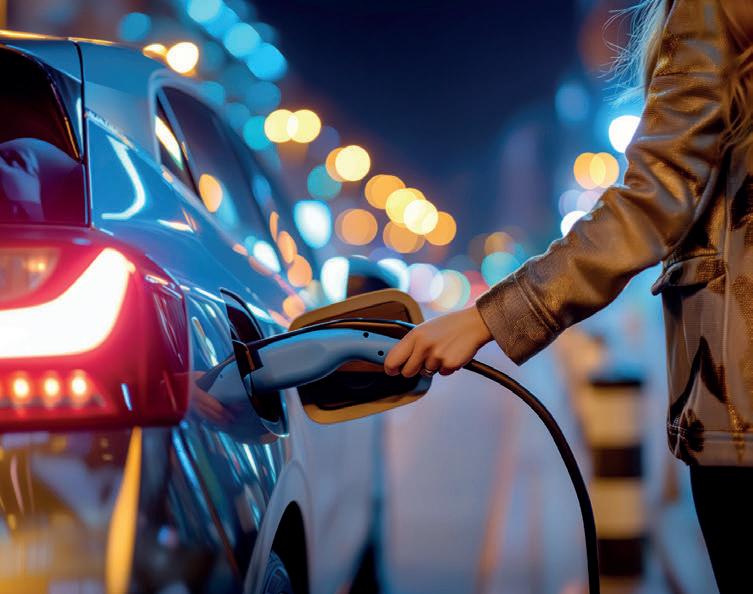
a personal perspective as an EV owner at home.
“The EV Superhighway was an amazing first step to EV charging in the north. Whilst most charging stations are very well placed and convenient, some charging stations may not have been designed with women in mind. As an EV owner and a woman, I’ve observed that some locations may not ideal for a woman travelling alone to charge her EV at night, and consideration of this in decision making for future installations may be beneficial,” Thyer said.
Thyer said some drivers did find
nervousness when first getting to use EV, but most just showed a lot of interest and curiosity. To help new drivers Reef Authority Property Services unit played a crucial role, providing personalised attention and training for drivers.
For those unfamiliar with the distinctive features of EVs, a Property Services representative accompanied them, guiding and addressing concerns. Thyer added that their reactions varied from nervousness to no hesitancy at all, showcasing the need for tailored approaches to different vehicle models.



Thyer also addressed the necessity for government fleets to assess the cargo space and shape of available EV models.
“Cargo space holds significant importance for certain public service vehicles, yet some of current EVs are sedan-style, presenting limitations in terms of practicality for loading and unloading items,” she said.
In Thyer’s opinion, all those challenges above are real but can also be resolved through proper planning, engagement and consultation with staff, and charging limitations should resolve as more infrastructure is installed.
“It is fantastic to be part of the EV transition and being quick to take up low emissions transport in Reef Authority operations. Engagement is crucial for successful EV adoption, as it’s not just about real challenges but also perceived concerns,” Thyer said. “Proper engagement with staff is key; without it, troubles may arise and they need to be addressed.”
www.ecogeneration.com.au April 2024 ecogeneration | 35
EV FLEET| ELECTRIC VEHICLES
The Reef Authority finds EVs low maintenance and easy to use.
One of Reef Authority’s EVs.
Image: SObeR
9426/stock.adobe.com
Image: Reef Authority

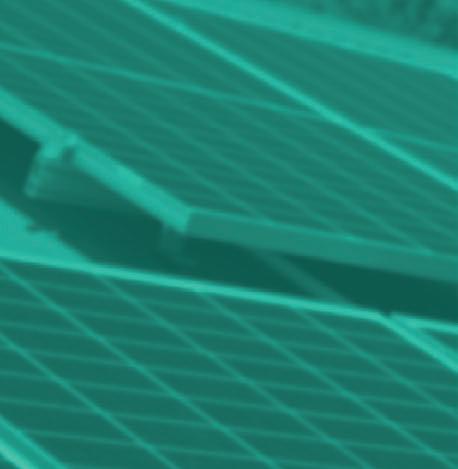













Subscribe at cleanenergycouncil.org.au/mycec
EXPERTS ON YOUR TEAM Subscribe to myCEC to access these benefits SUPERCHARGE YOUR SKILLS BUSINESS ESSENTIALS HAVE YOUR SAY Watch Toolbox Talks and download deep-dive Advice Docs on all the key standards. Get alerts on new requirements plus templates, tools and insurance discounts from Howden to help your business save time and money. Industry veteran support on email and phone to answer all your technical questions. Have your say on the issues that matter to you through regular polls, industry opportunities and our Industry Reference Group. SUBSCRIBE FREE ACCESS FOR ACCREDITED INSTALLERS & DESIGNERS HAS NOW BEEN EXTENDED UNTIL JULY 2024 $280/yr EXC. GST
FROM THE INDUSTRY EXPERTS TOOLS TO GET THE JOB DONE RIGHT
Since 2007 the Clean Energy Council has supported installers and designers with expert technical advice and resources to help them meet standards and requirements. Now, everyone working in the industry can access these services too through a myCEC subscription.
THE SOLAR INSTALLER


ATESS’ DC COUPLING SOLUTION PG46 HOYMILES’ INVERTERS PG44 1MW ROOFTOP SOLAR SYSTEM PG54
accreditor confirmed P50 April 2024
New
Akcome achieves 25.6per cent HJT cell efficiency
Photovoltaic conversion efficiency is the critical benchmark when a new solar cell technology aims to surpass existing ones.
As one of the most promising technology paths for nextgeneration crystalline silicon photovoltaic cells, cost reduction and efficiency enhancement of heterojunction (HJT) cells are highly sought after.
Since early 2023, Akcome Science and Technology (Akcome), a global leading HJT manufacturer, has achieved a range of core improvements for reducing HJT cell costs and boosting efficiency.
These include thinner cells, surface micro crystallisation, less silver paste, indium-free transparent conductive oxides (TCO), and perovskite-HJT tandem cells. These advancements have continued driving improvements in HJT cell conversion efficiency.
From single-sided to bifacial micro crystallisation
Compared to traditional amorphous silicon (a-Si) films, microcrystalline silicon films offer better performance, including

improved light transmission, higher fill factor, lower current, higher open-circuit voltage, and higher electrical conductivity.
Applying microcrystalline silicon can increase HJT cell conversion efficiency by 0.2-0.3 per cent or more. Akcome’s micro crystallisation process forms a microcrystalline silicon film on the surface of HJT cells using VHF-PECVD technology.
The company has achieved an average mass production conversion efficiency of 25.3-25.4 per cent for single-sided microcrystalline HJT cells, with a 98 per cent production yield.
In Q4 2023, Akcome commenced mass production of bifacial microcrystalline HJT cells, expecting to reach an industryleading average conversion efficiency of

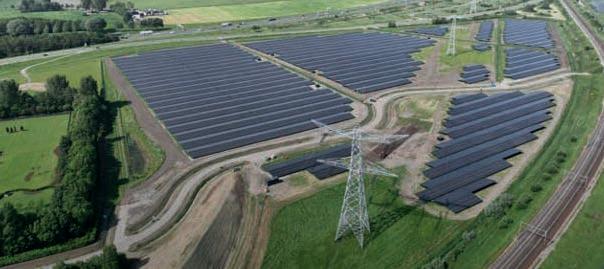
38 | ecogeneration April 2024 www.ecogeneration.com.au
SOLAR INSTALLER | HETEROJUNCTION CELLS
Akcome’s 2MW project in Kashiwakura, Japan.
Akcome’s 24MW project in Kruiningen, Netherlands.
Images: Akcome

processes and reliability under testing. Bifacial microcrystalline HJT cells supported by electroplated copper metal bus bars will bring about a 0.5 per cent conversion efficiency improvement.
“Akcome has achieved the goal of reduced silver in HJT through silver-coated copper, copper electroplating, bus bar graphic optimisation, and 0BB,” Dr. Xiner Huang, Vice President of Akcome Technology Research Institute said.


25.6-25.7 per cent. Additionally, Akcome has utilised light conversion film and double anti-reflective (AR) coated glass encapsulation, minimising power loss from cell to module with a 98 per cent cellto-module (CTM) ratio.
SMBB and 0BB technologies
Akcome has also developed super multiple bus bar (SMBB) and zero bus bar (0BB) technologies to reduce costs and improve efficiency.
SMBB increases the number of bus bars while reducing their height and width, improving light utilisation, reducing silver paste consumption, and lowering power loss.
Starting in 2022, Akcome shifted its HJT module products from 12 bus bars (BB) to 18BB. The highest power of the 210-66 model HJT module with 18BB fingers has exceeded 720W, with an average mass production power of 705W.
In comparison, Akcome’s 0BB technology uses copper welding tape to interconnect cells and collect current from fingers, eliminating silver bus bars on both cell sides.
The fingers use silver-coated copper paste, reducing overall cell silver consumption to less than 8mg per watt. Furthermore, the number of copper welding tape-supported bus bars can be increased to 22-24BB with low-temperature lamination technology.
During SNEC 2023, Akcome launched its 0BB HJT module with a power output of up to 730W and a conversion efficiency of 23.5 per cent. Akcome expects to mass produce 0BB HJT modules by early 2024, reducing silver paste costs to about CNY 0.03-0.04/watt.
Thinner cells
HJT cells have natural advantages in adapting to thinning treatments. First, thinning HJT wafers has a minimal impact on efficiency compared to traditional PERC cells, which have a thinning limit of 150 micrometres (µm).
The thickness limit for HJT cells with negligible efficiency losses is about 90µm. Second, HJT’s simple, low-temperature production process minimises wafer warping or fragmentation.
Currently, Akcome is pilot testing 110µm wafers, which can improve efficiency by more than 0.2 per cent compared to 150µm wafers and reduce cell costs by CNY 0.03-0.04/watt.
According to Akcome’s research and development plan, the company aims to use 100µm wafers by year-end and further reduce to 90µm by mid-2024, helping reduce the cost of its HJT cells to the same level as current PERC cells.
Reducing silver consumption
Silver paste is a core auxiliary material for HJT cell production, accounting for more than 40 per cent of non-silicon costs. Akcome continues to focus on silver-less technologies, such as silver-coated copper and copper electroplating, to reduce silver consumption costs.
Today, the company uses silver-coated copper paste with a 40-50 per cent silver content, lower than the industry’s mainstream 50 per cent proportion. In the future, Akcome targets silver-coated copper paste with a 30-20 per cent silver content.
Since 2018, it has been developing copper electroplating technology. Currently, Akcome has built a pilot line for copper electroplating, with module encapsulation
“It is expected that the cost of silver paste for HJT can be reduced to CNY 0.05/watt by the end of 2023.”
Indium-free and indium-reduced TCO Indium, a rare metal used in indium tin oxide (ITO) targets, is a major factor in the high manufacturing cost of HJT cells.
To reduce metal costs, Akcome is continuously developing indium-free and indium-reduced transparent conductive oxide (TCO) coating solutions.
Currently, Akcome is steadily advancing the pilot line of indium-reduced and indium-free TCO, expected for mass production introduction in early 2024. With the introduction of indium-free TCO, the cost of TCO will be further reduced by CNY 0.010.02/watt.
Perovskite and HJT tandem
Perovskite and HJT tandem cells are cuttingedge technology directions to enhance the potential of HJT technology.
Akcome has established a professional R&D team focused on researching, preparing, and applying perovskite-HJT tandem cells. The company is now building a pilot line targeting an initial average cell conversion efficiency exceeding 30 per cent.
Several Chinese research institutes believe that efficiency improvements in HJT cells are key to their substitution of existing technologies. Akcome expected that by the end of 2023, the cost of its HJT modules would be equal to that of TOPCon modules, and it will have an advantage over TOPCon with higher conversion efficiency and better performance characteristics.
As a global leader in HJT technology, Akcome has obtained 4GW of HJT cell production capacity so far and is seeking more.
The company has made a promise to its clients to take the lead in providing highquality, high-efficiency, and low-cost N-type HJT module products to global customers.
For more information, visit akcome.com.au
www.ecogeneration.com.au April 2024 ecogeneration | 39
HETEROJUNCTION CELLS | SOLAR INSTALLER
Akcome’s HJT production line.
Guardian of the solar power
Harnessing the power of the sun is increasingly attractive, especially in sun-drenched regions like Australia.
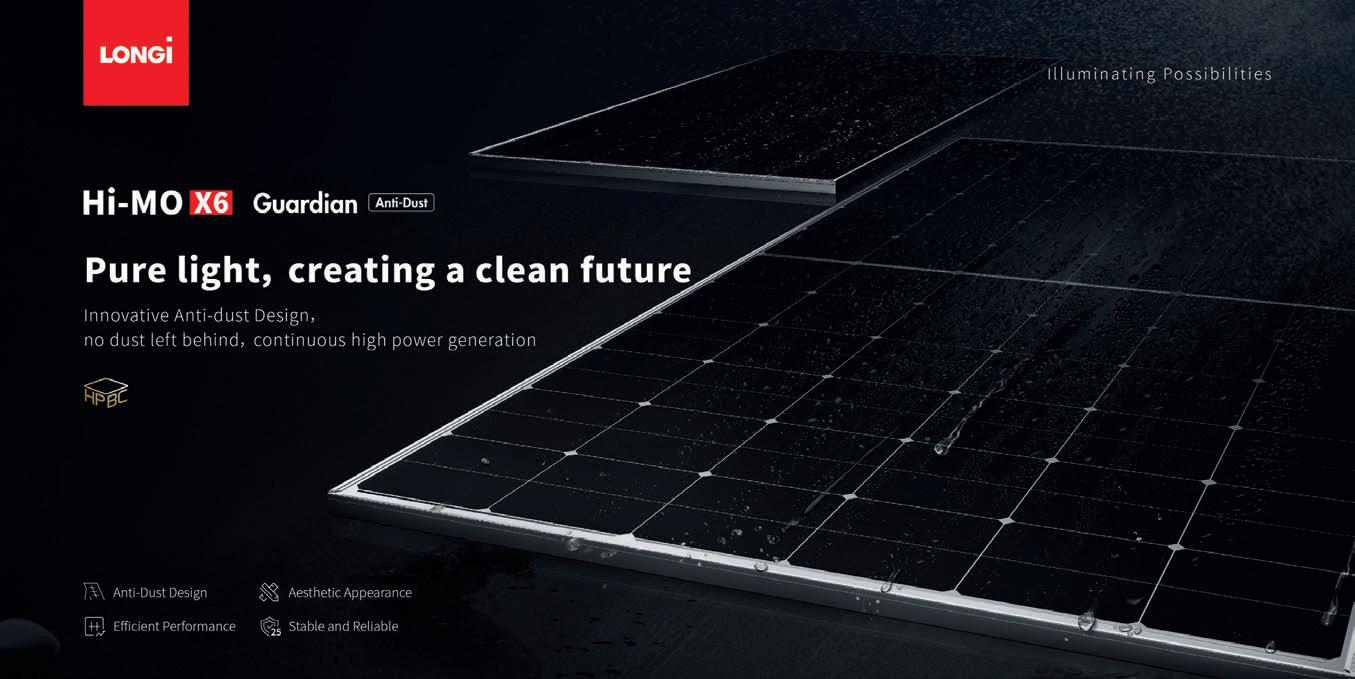
Dust, pollution, and harsh environmental conditions can significantly impact the efficiency of traditional solar panels.
LONGi, a leading solar technology company, has introduced the Hi-MO X6 Guardian, a solar panel specifically designed to address these challenges and deliver peak performance in demanding environments.
The genesis of the Hi-MO X6 Guardian can be traced back to LONGi’s unwavering commitment to customer-centricity. Brett Robinson, LONGi Australia’s National Sales Manager, recounted a pivotal moment a few years ago when the company started a comprehensive customer interrogation to understand how it could enhance the company’s offerings.
“Everyone wants to be told they’re great, but what we truly desire to know is how we can improve,” Robinson said.
“Interestingly, almost 80 per cent of the respondents mentioned something—the desire for a panel to perform better on a roof,
especially in dusty, dirty conditions with high levels of pollutants in the air.”
This revelation ignited an 18-month journey of research and design excellence. LONGi’s top-tier research and design team conducted exhaustive comparisons, performed nearly 1000 simulations, and
subjected the prototype to around 500 days of rigorous testing. The result is the Hi-MO X6 Guardian— a testament to LONGi’s commitment to innovation and meeting customer demands.
One standout feature of the Hi-MO X6 Guardian is its frame adjustment, aligning
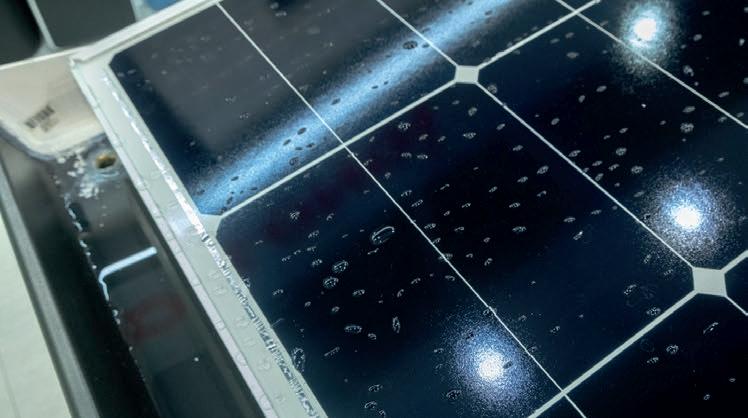
40 | ecogeneration April 2024 www.ecogeneration.com.au
SOLAR INSTALLER | SOLAR PANELS
LONGi Hi-MO X6 - Guardian Anti-Dust features an innovative anti-dust design, ensures no dust is left behind for continuous high-power generation.
Images: LONGi
LONGi Hi-MO X6 _Guardian Anti-Dust solar panel.

seamlessly with the glass to allow water to drain away effortlessly. In contrast to traditional panels where water was impeded by the frame’s edge, the Guardian’s design ensures optimal functionality even at angles as low as 10 degrees, preventing tidemarks that can compromise electrical output.
Internal testing revealed that a mere 30-millimeter-deep tidemark at the bottom of a panel could reduce its output by 3.9 percent, highlighting the practical implications, especially in commercial setups where one
Moreover, the Guardian introduces advanced anti-dust technology that minimises hotspot activity, preventing damage to cells due to accumulated energy.
Robinson proudly announced Australia’s status as one of the first countries to introduce this product, recently showcased at a major Japanese expo.
Temperature control is a critical factor in solar efficiency, and the Hi-MO X6 Guardian
excels in this aspect. The module temperature reduction observed in the range of 3.7 per cent to 4 per cent over several days is a noteworthy achievement.
Cooler cells contribute to enhanced power output, with a maximum gain of 1.8 per cent and an average daily module temperature decrease of 2.4 per cent.
These figures aren’t just theoretical; they have been validated through monitoring at a specific site in a coastal city under daily conditions, just to test the endurance of the Hi-MO X6 Guardian.
The anti-dust and anti-pollutant features extend beyond mere surface protection. The Hi-MO X6 Guardian introduces a patented gluing process that enhances accuracy by about 50 per cent, addressing concerns about water ingress.
“We have implemented a more targeted and directed gluing process, allowing us to achieve extremely fine margins at the edges. This step is crucial as part of our commitment to customers, promising a 25year warranty on parts, materials, and labor,” Robinson said.
“If water seeps through the edges, it could result in a significant number of quality issues. Nothing motivates our team more than presenting them with such a challenge, providing an opportunity for them to apply their empirical designs and utilise their expertise with slide rules.”
Cost savings are another highlight of the Hi-MO X6 Guardian, particularly in its single glass variant tailored for commercial applications. The cost-effective design extends to the surface of the glass, promoting efficient cleaning and minimising pollutant accumulation.
The anti-dust edge plays a pivotal role in maintaining panel integrity, especially in coastal environments where salt particles and crystals pose a risk. By mitigating these risks, the product ensures long-term durability and performance, making it a prudent investment for businesses.
Hi-MO X6 Guardian’s versatility, efficiency, and safety features make it an ideal choice for various sectors, including government, education, healthcare, public infrastructure, and special industry enterprises.
LONGi’s Hi-MO X6 Guardian ensures businesses can embrace a solar solution that not only meets their current energy needs but also aligns with Australia’s vision of creating a more sustainable and environmentally friendly world.
For more information, visit longi.com/au
www.ecogeneration.com.au April 2024 ecogeneration | 41 SOLAR PANELS | SOLAR INSTALLER
panel’s efficiency can impact an entire string system.
LONGi Hi-MO X6 Guardian’s frame adjustment aligns seamlessly with the glass, allowing water to drain away effortlessly.
Unlocking the potential of commercial energy storage
Growatt has introduced two products to the Australian market, the WIT 50-100K-HU/AU Commercial Storage Inverter series and the Growatt APX 129-200kWh Commercial Battery.



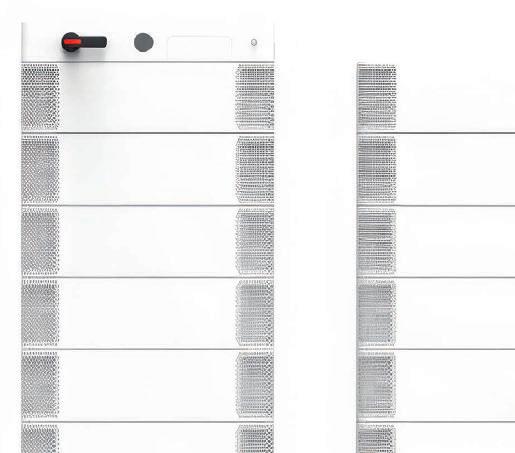



With cutting-edge solutions aimed at redefi ning efficiency, reliability, and adaptability in commercial energy storage applications, Growatt’s WIT 50-100K-HU/AU Commercial Storage Inverter series and the Growatt APX 129200kWh Commercial Battery are helping achieve this.
Growatt is encouraging users to embark on a new era of commercial solar energy storage solutions with the WIT 50-100K-HU/AU Commercial Storage Inverter series it offers. This innovative series offers two distinct models – Hybrid and alternating current (AC)-coupled – catering to a wide spectrum of commercial scenarios.
The Hybrid seamlessly integrates with photovoltaic (PV) panels and batteries, providing a comprehensive solar solution, while the AC-coupled model enhances existing solar systems with advanced energy storage capabilities, the perfect combination for the solution.
42 | ecogeneration April 2024 www.ecogeneration.com.au
SOLAR INSTALLER | INVERTERS
WIT+APX Smart Hybrid Energy Storage System.
Growatt APX 129-200kWh Commercial battery.
Images: Growatt
The WIT series introduces features that redefi ne efficiency in commercial energy storage applications. Built-in uninterruptible power supply (UPS) and black start functionality ensures an uninterrupted power supply during grid outages.
With 100 per cent unbalanced output and 110 per cent continuous AC overloading, this series exhibits resilience in demanding conditions. The inclusion of Type II surge protection device (SPD) on both direct current (DC) and AC sides provides robust surge protection, enhancing the system’s longevity.
different SOC. This adaptability caters to the evolving needs of commercial enterprises, offering a tailored approach to energy storage.
Renowned for safety and reliability, APX Commercial Batteries complement the WIT inverter, creating a dependable energy storage solution for commercial applications in the industry.
As Growatt expands its presence in the ever growing Australian market, the WIT-APX combination stands as a testament to the company’s commitment to delivering efficient and high-quality solutions for commercial
energy storage needs to the industry.
The Growatt WIT Commercial Energy Storage Inverter, in tandem with the APX Commercial Battery System, offers a formidable solution for commercial applications.
Growatt says its inverters’ adaptability, advanced safety features, and modular design make them the ideal choice for businesses seeking to lower carbon footprint and optimise energy costs.
For more information, visit ginverter.com
Growatt is able to help customers maximise yields with multiple maximum power point tracking (MPPTs) input, optimising solar energy harvesting.
The WIT series boasts a DC/AC ratio of up to two and a maximum efficiency of up to 98 percent, ensuring peak performance.
In addition, scalability up to 300kW allows customisation to evolving energy requirements, supporting lithium batteries for flexible energy storage solutions.

The series also includes remote control capability and seamless connectivity through its ShineWiFi-X, ShineLan-X, and ShineWiLan-X2 technologies, making system management a breeze through the ShineMaster platform.
The Growatt APX Commercial Battery System is designed to extend the capabilities of commercial solar setup with a seamless integration with the Growatt WIT Commercial Energy Storage Inverter series.
The company said this establishes a robust and reliable energy storage solution for commercial applications.
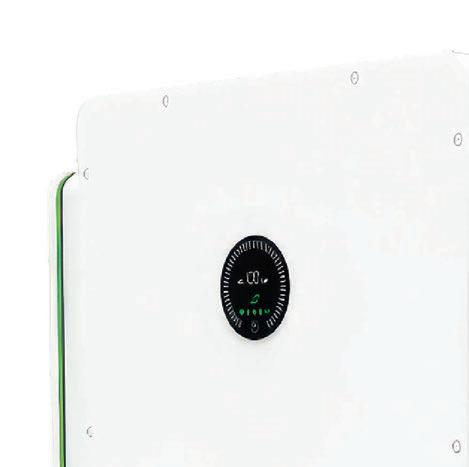

Thriving in diverse environments with an operating temperature range of -10°C to 50°C, the APX Commercial Battery System ensures optimal performance across various climates. Its IP66 design enhances resilience, safeguarding the system against dust and water ingress.
Backed by a long-lasting and ultra-safe lithium iron phosphate (LFP) battery, APX batteries prioritise safety without compromising performance.
Modular energy optimisation enhances efficiency, while passive protection through fuses and aerosol adds an extra layer of safety. The soft start feature defends the system from surges, contributing to its overall reliability.
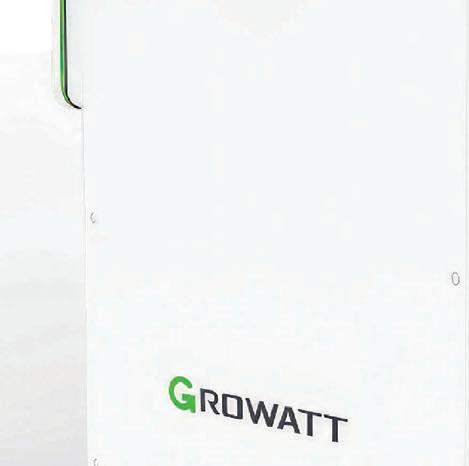

The APX Commercial Battery System introduces unparalleled expansion flexibility, allowing the integration of mixed packs of new and old batches, and mixed packs of




www.ecogeneration.com.au April 2024 ecogeneration | 43
INVERTERS | SOLAR INSTALLER Growatt WIT 50-100K-HU/AU.
Saying goodbye to power outages
Hoymiles’ energy storage solution ensures uninterrupted energy flow to homes by offering hybrid and AC-coupled inverters that redefine how we harness and store solar power.
Hybrid inverters are revolutionising the energy landscape by integrating the functionalities of traditional photovoltaic (PV) inverters with alternating current (AC) power sources and battery storage systems.
These advanced devices boast operational flexibility, working seamlessly with or without batteries to cater to diverse solar

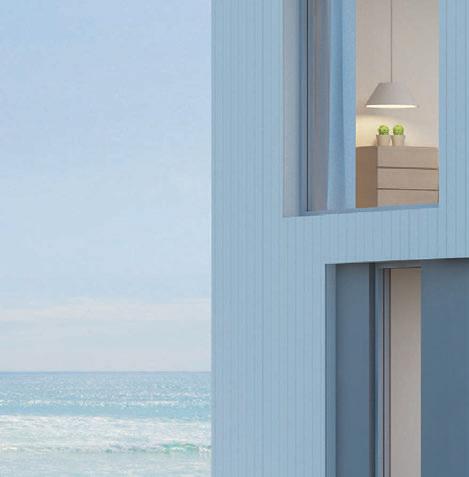
energy configurations. When paired with a battery, they expertly manage energy flow, storing excess solar energy in the battery for later use. The inverter can import lowpriced electricity from the grid and release it during peak hours or when the grid is lost.
A key advantage of Hoymiles’ hybrid inverters is its ability to ensure uninterrupted power during grid outages.
Leveraging stored battery energy to become a reliable source, the inverters keep critical appliances and systems running. This resilience makes them ideal for regions prone to power interruptions or extreme weather conditions.
Hoymiles’ hybrid inverters support additional power sources, including generators, empowering users with greater
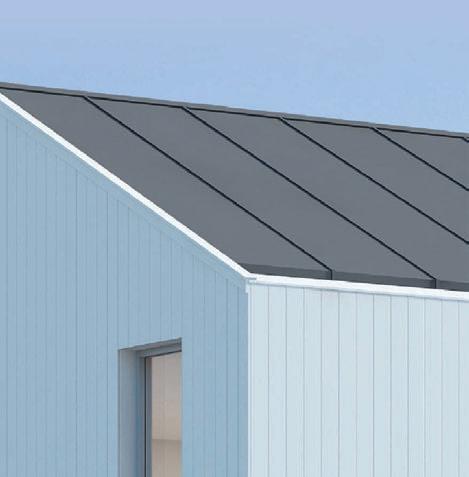
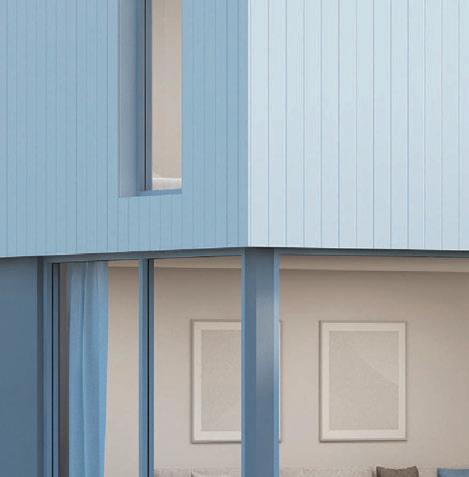




44 | ecogeneration April 2024 www.ecogeneration.com.au
SOLAR INSTALLER | INVERTERS
Images: Hoymiles




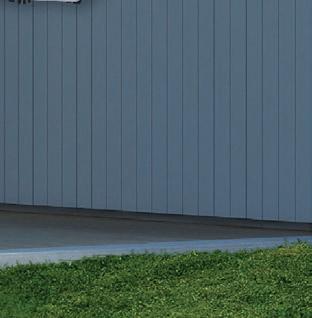

control over their energy supply and making them suitable for off-grid applications or locations with unreliable grid connectivity.
Complementing its hybrid inverter lineup, Hoymiles offers a range of battery inverters (also called AC-coupled inverters) to more easily transform the installed solar system into an energy storage system.
When combined with Hoymiles’ powerful microinverter products, these battery inverters can achieve the same capabilities as hybrid inverters alone. The battery inverters play a vital role in storing surplus solar power, ensuring a continuous and reliable power supply when needed.
What sets Hoymiles’ AC-coupled inverters apart is their ability to seamlessly integrate with existing PV systems. This means if a client already has a solar installation and wishes to add energy storage capabilities, Hoymiles’ battery inverters offer efficient storage without requiring a complete system overhaul.
These inverters are also suitable for larger residential properties, small-scale commercial buildings, and industrial facilities with higher energy demands. By also playing a critical role in large-scale energy storage power stations, this contributes to grid stability and serves as a reliable backup during emergencies.
Hoymiles goes beyond offering just inverters; it provides a comprehensive suite of solutions that redefines its interaction with solar power.
The company’s hybrid inverters seamlessly switch between on-grid and offgrid modes, allowing users to back up their power supply as needed.
Hoymiles inverters are designed for residential use, they are easy to install and, most importantly, they offer compatibility with multiple battery brands, giving customers different options and system integration solutions.
When coupled with a power generator, the inverters transform into a long-term off-grid solution.
This is an advantage that cannot be ignored, as it provides an effective solution for off-grid and locations with unreliable grid connectivity.
The inverters are also easy to install and offer a visualised display of system information accessible through the Hoymiles monitoring web portal and mobile app.
The company is at the forefront of innovation, extending its commitment beyond inverters to a comprehensive range of energy storage products, including advanced AC-coupled inverters that redefine performance and reliability benchmarks.
These battery inverters utilise intelligent energy management systems to efficiently store and utilise solar power, maximising energy efficiency and resulting in significant cost savings for users.
The system’s intelligent management functions automatically adjust according to user needs and the power market situation, ensuring a continuous power supply in various scenarios, including outages.
Hoymiles has emerged as a trailblazer in the solar energy arena, presenting a holistic approach to power management with its advanced hybrid and AC-coupled inverters. The company’s commitment to efficiency, versatility, scalability, safety and reliability positions it as a leading force in shaping the future of clean and sustainable energy utilisation.
When looking towards the future, Hoymiles hopes to continue transforming the way solar energy is harnessed and managed, paving the way for a brighter and more sustainable tomorrow.
For more information, visit hoymiles.com
INVERTERS | SOLAR INSTALLER
provide energy solutions for domestic solar and storage systems. www.ecogeneration.com.au April 2024 ecogeneration | 45
Hoymiles inverters
HYS single-phase hybrid inverter.
ATESS unveils ‘worry-free’ off-grid solution
ATESS, a pioneer in the energy storage industry, has introduced its latest breakthrough – the direct current coupling energy storage system.
In a new off-grid energy management advancement, ATESS’ direct current (DC) coupling energy storage system is tailored to enhance stability, reliability, and adaptability in challenging environments.
At the core of this novel DC coupling solution is the replacement of the bypass cabinet in ATESS’ original alternating
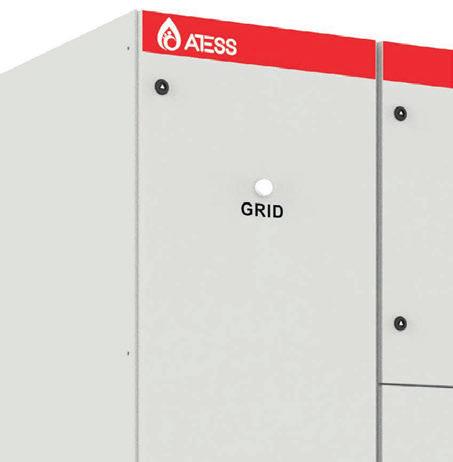


coupling (AC) design with the rectifier cabinet (RTF).
The transformation redefines the stateswitching logic of the grid and generator, eliminating AC-side switching and associated output fluctuations, thereby mitigating the risk of interruption of sensitive loads during the switching on the AC side.
A key benefit of ATESS’ DC coupling

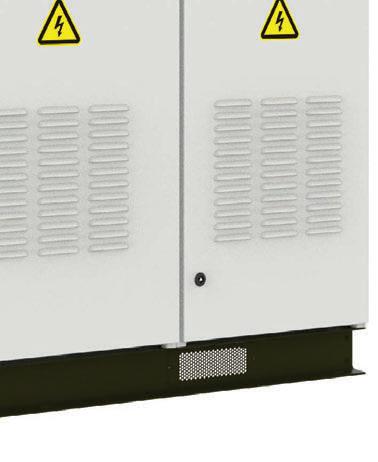
serves as a buffer power source, ensuring seamless operation of the power system.
This solution is particularly well-suited for large off-grid systems with significant inductive loads or those dealing with unstable power grids and subpar generator performance, providing a 0 ms switchover time and offering unparalleled reliability.
As part of ATESS’ DC coupling solution, several components play crucial roles:
Solar Charge Controller: SCC is a modular maximum power point tracking (MPPT) controller featuring five independent MPPT modules, with each channel supporting 50kW and a single-unit power of up to 250 kW.
Multiple SCCs can be paralleled to increase photovoltaic (PV) access capacity, with the number of parallel SCCs theoretically unlimited, and ATESS determining the parallel solution based on project requirements.
Power Conversion System: Power Conversion System (PCS) is a bidirectional battery inverter with a single-unit power range from 100kW to 1000kW (100/250/500/630/1000kW). ATESS PCS can be paralleled to increase the system load capacity, with the current maximum supported parallel units being four.
RTF Rectifier: RTF is a modular rectifier, with each module providing 40kW. A single RTF unit can be configured with a maximum of 15 modules, reaching a power output of up to 600kW. RTFs can be paralleled to increase grid and generator rectifier power, and the number of RTFs in parallel is theoretically unlimited. ATESS determines the parallel solution based on the specific project requirements. It’s important to note that RTFs currently only support rectification and do not have an inverter function.
Automatic transfer switch: The ATESS automatic transfer switch (ATS) is used to switch between the grid and DG automatically. It supports simultaneous access to the grid and generator and has a solution is the energy storage system
SOLAR INSTALLER | DC COUPLING SOLUTION 46 | ecogeneration April 2024 www.ecogeneration.com.au
ATESS’ ATS
630.
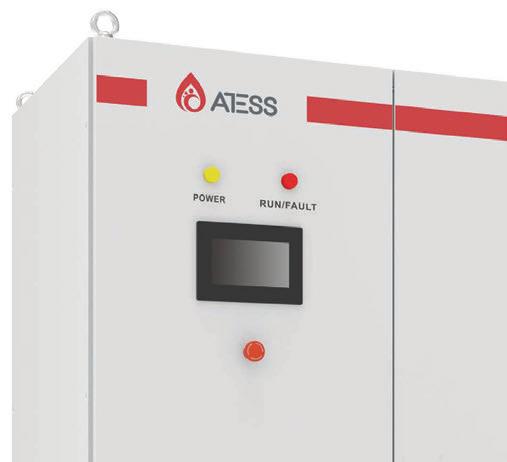


single-unit power of 630kW or 1200kW. With a built-in bypass switch, in the event of system failure, it can seamlessly bypass the grid or generator to supply power directly to the load. The PCS operates consistently, unaffected by grid fluctuations, providing stable load operation without the need for frequent ongrid/off-grid switching.
In contrast to the original PCS+Bypass solution, where frequent grid fluctuations disrupted load stability, the DC coupling solution ensures that PCS output continues according to present parameters, regardless of grid fluctuations.
The PCS ensures stable load operation, unaffected by generator fluctuations. In the original PCS+Bypass system, inconsistent generator performance often led to disruptions in system stability.
However, with the DC coupling solution, PCS operates independently of generator output fluctuations, allowing the RTF to




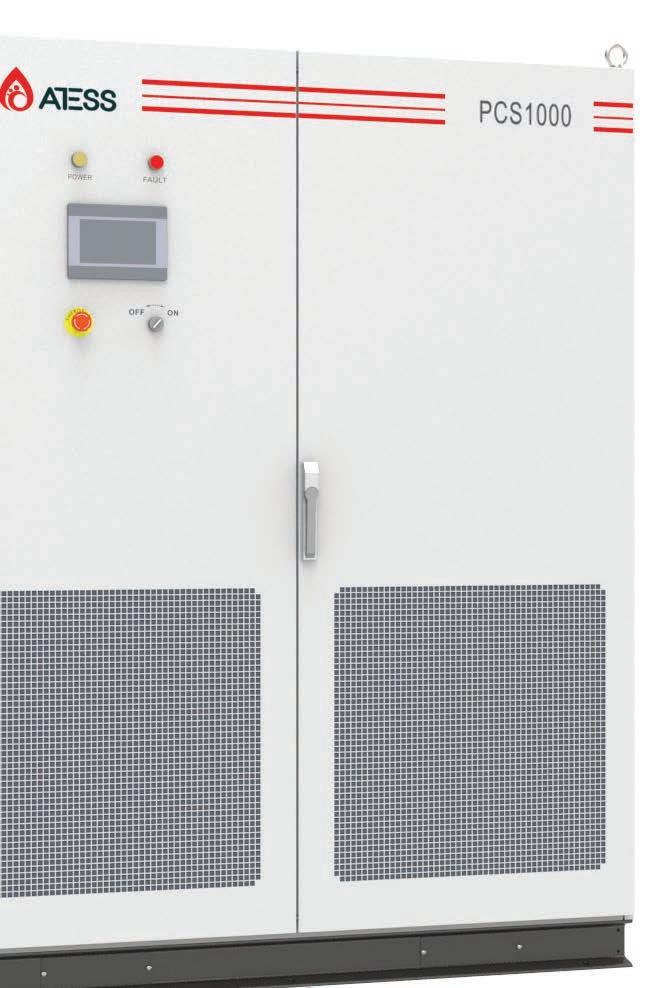
regulate power smoothly even during sudden load changes. This independence enhances overall system reliability by ensuring stable load operation.
ATESS’ DC Coupling Energy Storage System navigates challenges with unparalleled resilience and adaptability.
In the scenario of unstable power grid, the DC coupling solution ensures PCS operates consistently in off-grid mode, impervious to grid fluctuations.
The company outlined that with grid fluctuations only affecting the output power of ATESS RTF, leaving PCS’s AC output untouched significantly enhanced the stability of load operation.
ATESS said that this scenario is particularly crucial in regions with unreliable grid infrastructure, providing a robust solution for maintaining continuous power supply despite external variations.
“While in the scenario of generator under poor performance, with PCS consistently in
off-grid mode, the DC coupling solution remains unaffected by diesel generator output fluctuations,” ATESS outlined.
RTF’s incremental power control, after connecting to the diesel generator, ensures stable load operation, even during sudden heavy loads, and vastly improving system and load stability.
The system’s ability to adapt to poor generator performance positions it as a reliable solution in environments where diesel generators may be the primary power source.
ATESS views its DC coupling energy storage system as not just a product but as a game-changer that sets new standards for reliability, stability, and adaptability in offgrid energy management.
“Embrace the future of energy storage with ATESS – where innovation meets resilience,” the company said.
For more information, visit atesspower.com
DC COUPLING SOLUTION | SOLAR INSTALLER www.ecogeneration.com.au April 2024 ecogeneration | 47
ATESS’ RTF 300 rectifier. ATESSs PCS 1000 inverter.
Images: ATESS
A $206m energy efficiency boost announced for NSW
The Federal and NSW Governments have jointly unveiled a $206 million package aimed at funding energy-saving upgrades and expanding access to solar power.
In a collaborative effort to alleviate cost-ofliving pressures for tens of thousands of NSW households, both governments have committed $87.5 million each over four years for energy-saving improvements to more than 24,000 properties across the state.
Social housing properties, often ranking among the least energy-efficient homes, are considered in this initiative to alleviate costof-living pressures for tens of thousands of NSW households.
Upgrading these homes from a one-star to a three-star energy rating can reduce energy consumption by 30 per cent, leading to decreased power bills.
The funding will facilitate upgrades such as heat-pump hot water systems, ceiling fans, reverse-cycle air conditioners, solar systems, insulation, and draught proofing.
Priority will be given to older, less energyefficient properties and those in extreme heat and cold locations.
Additionally, the Albanese Government has earmarked $30 million to assist low-income households and apartment residents in funding rooftop solar installations or gaining access to a portion of a solar garden community energy plot.
The Solar Banks program is expected to benefit around 10,000 households,

Prime Minister Anthony Albanese emphasised the government’s commitment to providing clean, affordable energy to all Australians.
“Saving energy means saving money, which is why we’re continuing to deliver cost of living relief for families that need it most without adding to inflation,” Albanese said.
“We want all Australians to have access to cleaner, cheaper energy. Renewable energy for social housing helps power bills and is good for the environment.”
NSW Premier Chris Minns highlighted the importance of addressing the cost of living, making it a top priority for NSW as the state’s
PCL locks in Bulli Creek Solar contract
Genex Power has appointed PCL Constructors as the preferred engineering, procurement, and construction contractor for the Bulli Creek Solar Project (BCS), a massive 775MW Stage 1 solar project in partnership with J-POWER and Solar Choice.
The selection of PCL follows a rigorous tender process conducted in 2023,
delivering complex projects on time and within budget.
Genex and PCL have entered an early contractor involvement agreement to collaboratively design and scope the full specifications for the BCS.
This lays the foundation for finalising terms in CY2024 for a comprehensive EPC contract to engineer and construct the project.
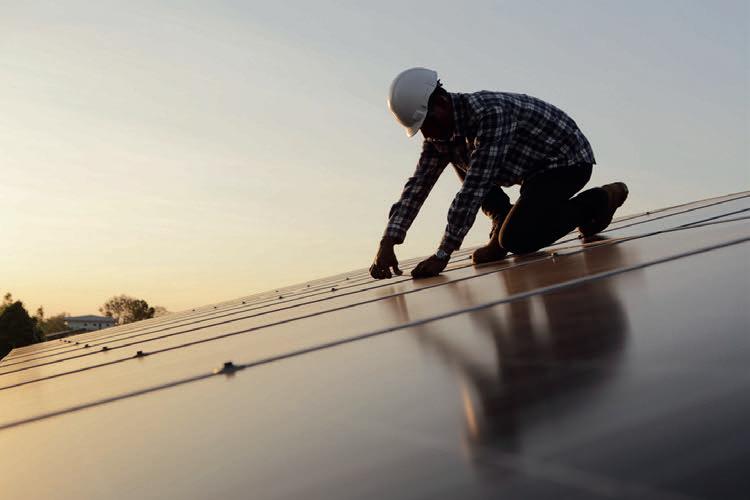
“We are proud to partner with the Albanese government to deliver cheaper, cleaner energy to some of the least energy-efficient houses in the country,” Minns said.
Energy Minister Chris Bowen said Labor was helping those currently left out of energy efficiency and renewables “reap the rewards of the clean energy transformation”.
“Critical energy upgrades in social housing properties and strong solar energy incentives for apartment block residents across NSW will deliver cleaner, cheaper energy to more Australians,” he said.
According to Labor, a further $1 million will be invested in community renewable energy projects on the far south coast, aligning with Labor’s election commitment.
connected to the National Electricity Market, making the choice of the construction contractor crucial.
Craig Francis, Genex CEO, expressed satisfaction with PCL’s selection, citing their global reputation and impressive track record in Australia.
“PCL is a globally reputable EPC contractor in the large-scale solar industry, having installed a total of 3044MW globally and 474MW in Australia, with another 631MW capacity currently in construction in Australia. During the tender process, we were particularly impressed with PCL’s onthe-ground capability in Australia and their impressive safety record,” Francis said.
“At up to 775MW, the Bulli Creek Solar Farm is expected to be the largest solar farm connected to the National Electricity Market, which makes the selection of our construction contractor critical and a development milestone.
“We are looking forward to working closely with PCL as we continue to advance the Bulli Creek Solar Farm toward a final investment decision later this year.”
48 | ecogeneration April 2024 www.ecogeneration.com.au
$206 million NSW-Federal plan is set to make some energy-saving upgrades, and expand solar access.
Genex and PCL have entered an early contractor involvement agreement.
Image: Andrii/ stock.adobe.com
SOLAR INSTALLER | NEWS
Image: boonchok/stock.adobe.com
Tassie homes to receive $16.6m energy upgrade
A $16.6 million partnership with Tasmania’s Rockliff Government and the Australian Government will help deliver long-term cost-of-living savings to over 1600 Tasmanian households through energy upgrades in social housing properties.
Social housing properties, primarily those constructed over 20 years ago without adherence to minimum build standards, are known for their energy inefficiency. To address this issue, the Commonwealth and Tasmanian governments are collaborating to extend the state-run program, Homes Tasmania Energy Efficiency Program.
The initiative aims to enhance energy efficiency by incorporating heat pump hot water systems, insulation, draught proofing, LED lights, and window glazing in social housing properties. Approximately 11 per cent of the state’s social housing units will benefit from some form of upgrade under this program.
This investment is part of the larger $1.7 billion Energy Savings Package by the federal government, with $300 million
allocated to fund upgrades for up to 60,000 social housing properties nationwide.
Minister for Climate Change and Energy Chris Bowen emphasised the government’s commitment to assisting households in achieving real cost-of-living savings through energy bill reductions.
The announcement complements
Tasmania’s existing Energy Bill Relief Fund, which supports about 143,000 Tasmanian residents with an average savings of $500 off their bills.
Minister for Housing Julie Collins highlighted the government’s dedication to ensuring more Tasmanians have a safe and affordable place to call home.
“This new partnership will mean more homes in Tasmania are energy efficient, saving residents’ energy and money,” Collins said.
Tasmania’s Minister for Housing and Construction Nic Street welcomed the announcement, emphasising the positive impact it will have on over 1600 Tasmanian households.
Vic unleashes $1.3m grants to boost women in energy and solar
The Victorian Government has announced a new round of grants, totalling $1.3 million, through the Women in Energy and Manufacturing Funding Program.
These grants aim to attract, recruit, and retain women while dismantling historical barriers that have hindered their progress in these sectors.
The first grants round supported various initiatives. The National Association of Women in Operations received backing for mentoring programs, including virtual group and one-on-one sessions. Additionally, Australian Women in Solar Energy ran school awareness campaigns, particularly focusing on promoting careers in solar energy.
The initiative also extended support to the Women in Trades project by the Australian Manufacturing Union. This project orchestrated trade demonstration events, employer site visits, and career expos, collaborating with major employers such as Nestle. The goal was to attract young women to explore opportunities in the manufacturing sector.
Addressing gender imbalances in these sectors is not the sole objective as the grants also aim to alleviate skill shortages by empowering more women to pursue and excel in energy and manufacturing careers going forward.
Currently, women account for only 32 per cent of Victoria’s manufacturing sector and 33 per cent in electricity, gas, water, and waste services. The figures are even lower
when considering women in trades.
Victorian government claimed this initiative is a cornerstone for its response to the Inquiry into Economic Equity for Victorian Women. Minister for Women Natalie Hutchins affirmed the importance of the program.
“We want women of all ages,
More than 1600 households in Tasmania will be benefitted from this partnership.


“These energy efficiency initiatives will not only extend the life of public housing assets but also enhance the living conditions, energy efficiency, and costeffectiveness for residents,” Street said.
“I welcome the Australian Government’s $8.3 million partnership, matching the Rockliff Liberal Government’s investment of $8.3 million which will provide better outcomes for Tasmanians.”
backgrounds, and identities to have the careers they want – which is why programs like this are so important,” Hutchins said.
“Attracting, recruiting, and retaining more women in Victoria’s energy and manufacturing industries will also help these sectors grow and thrive through a period of rapid transformation.


www.ecogeneration.com.au April 2024 ecogeneration | 49
Image: vegefox.com/stock.adobe.com
female solar
A
installer working onsite.
NEWS | SOLAR INSTALLER
Image: bulentbaris/stock.adobe.com
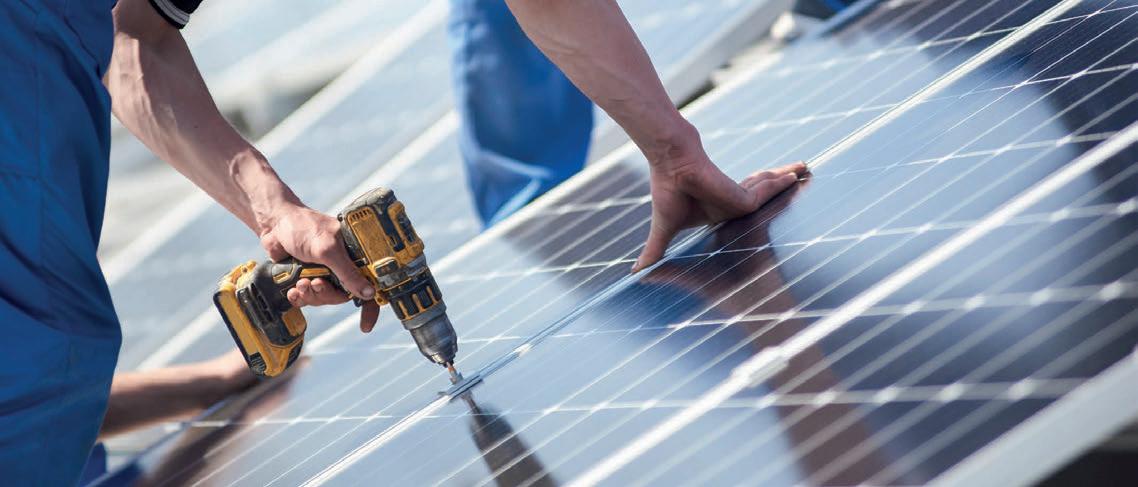

Solar Accreditation Australia confirmed as new accreditor
Queensland-headquartered Solar Accreditation Australia has been given the nod by the Clean Energy Regulator as the new installer and designer accreditation scheme operator supporting the small-scale Renewable Energy Scheme.
According to the Clean Energy Regulator (CER), Solar Accreditation Australia (SAA) replaces the Clean Energy Council (CEC), which served in this role for the past decade.
The CEC’s accreditation services have now ceased, and the transition to SAA is now in effect.
SAA, an independent and accountable body, aims to enhance standards, transparency, and accountability in the solar energy sector. Accredited installers and designers under SRES must transfer to SAA by June 2024 to maintain eligibility for small-scale technology certificates. The transition incurs no fee, and existing CEC accreditation expiry dates and fees are honoured.
CER’s Renewable Energy Target branch General Manager, Matthew Power, expressed anticipation in collaborating with SAA to ensure ongoing improvement in the training and performance of accredited installers.
“Consumers and businesses who are increasingly turning to rooftop solar to control their energy bills can remain confident that accredited installers and designers have the necessary training and skills,” Power said. “We look forward to working with SAA to
both maintain and continue to improve the training and performance of accredited installers for high quality installations.”
CEC Chief Executive Kane Thornton said he is proud of the role that the Clean Energy Council played in supporting Australia’s solar industry and world-leading uptake of rooftop solar over the past 16 years.
“Rooftop solar plays a critical role in our clean energy transition. In 2024, approximately one in three Australian households have solar systems installed,” Thornton said.
“I would like to congratulate Solar Accreditation Australia on their successful application and appointment to this new role.”
The CER announced on Tuesday, November 21 that as part of its application evaluation process for a new accreditation scheme operator (ASO), it has refused one ASO application and is on track to approve another application in February 2024.
As part of the transition to the new ASO, the CER has confirmed:
• accredited persons will need to transition their CEC accreditation to the new ASO within the three-month transition period to remain eligible for small-scale technology
certificates (STCs); there is no fee to transition your accreditation
• the new ASO will honour CEC accreditation expiry dates and fees paid. An accreditation renewal fee will be due on expiry of your existing CEC accreditation
• if your accreditation expires on or after the CER has made and announced its decision, you must accredit yourself with the new ASO to remain eligible for STCs; this will attract a fee; the CER will work with accredited persons, CEC and the new ASO to smoothly transition affected persons
• there are no immediate proposed changes to accreditation requirements, including relevant training units. The new ASO will recognise continuous professional development completed under the CEC’s accreditation scheme.
The rooftop solar sector in Australia has witnessed significant growth, reaching 3.1GW installed in 2023, up from 2.8GW in 2022, with prospects for continued expansion.
Installers and designers are encouraged to refer to the CER website for further information during the transition period.
50 | ecogeneration April 2024 www.ecogeneration.com.au SOLAR ISNTALLER | SOLAR ACCREDITATION
Image: anatoliy_gleb/stock.adobe.com.au
Solar Accreditation Australia is the new installer and designer accreditation scheme operator.




Visit us online today! CLICK ON ECOGENERATION.COM.AU newsletter and fortnightly solar installer newsletter.

Market trends revealed
Marco Stella from CORE Markets provides a snapshot of Australia’s clean energy market.
Large-scale generation certificate market
After the sharp sell-off and subsequent recovery across the curve following the December announcement of the Capacity Investment Scheme, prices were softer to start the New Year. A pickup in compliance buying saw prices stabilise late January, though was short lived as immediately following the conclusion of the 2023 compliance period prices once again fell away to fresh lows by late February.
Though we are yet to receive the Clean Energy Regulator’s (CER’s) official take (pending the release of the Quarterly Carbon Market Report), figures available on the Registry suggest a Shortfall surrender of at least 3m for the year, with circa 14.5m large-

scale generation certificate (LGCs) rolled forward from 2023 into 2024.
Small scale technology certificate STC prices which had been relatively stable around $ 9. in the spot, rose steadily to the $ 9.6 s in late ebruaryon the release of the ST , which at 21.26 per cent representeda significant increase on the previous year s estimate for 2 24
While the surplus has continued to grow year-on-year, owing in part to shortfall strategy implementation, a spike in voluntary demand in the Cal 25 compliance year is expected to keep things interesting in the medium term.
The new ST of21.26per cent would re uire 646k certificates created per week to meet the target. This is in e cess of current creation figures, which have been averaging k per week this year. Accordingly, it is anticipated that we will once again see a return to the Clearing House for 1 compliance in April, where we are likely to remain for 2, potentially coming back out in 4.
February also saw the release of the RPP at 18.48 per cent, which was slightly below the 2023 target of 18.96 per cent but reflects the generally stable nature of the RPP since the
SOLAR INSTALLER | MARKET WRAP 52 | ecogeneration April 2024 www.ecogeneration.com.au
DOMESTIC CREATIONSPOT PRICE
LGC – Large-scale Generation Certificates 455,956,464 $44.25 STC – Small-scale Technology Certificates 420,877,718 $39.65 VEEC – Victorian Energy Efficient Certificates 84,174,594 $91.00 ESC – NSW Energy Saving Certificates 57,370,017 $21.90 INTERNATIONAL DEC ‘24 PRICE (€)DEC ‘24 PRICE ($) EUA – European Emission Allowances €56.37 $93.64 Sma
tec
gy certificate market
($AU)
sca e
n

target reached its plateau level of 33m MWh in 2021.
At the time of writing the forward curve was as such: Spot $44.25, Cal 24 $46.40, Cal 25 $47.00 and Cal 26 $39.50.
Small-scale technology certificate market
Small-scale technology certificate (STC) prices which had been relatively stable around $39.30 in the spot, rose steadily to the $39.60s in late February on the release of the STP, which at 21.26 per cent represented a significant increase on the previous year’s estimate for 2024.
The new STP of 21.26 per cent would


require 646k certificates created per week to meet the target. This is in excess of current creation figures, which have been averaging 555k per week this year. Accordingly, it is anticipated that we will once again see a return to the Clearing House for Q1 compliance in April, where we are likely to remain for Q2, potentially coming back out in Q3/4.
Energy efficiency markets (VEECs and ESCs)
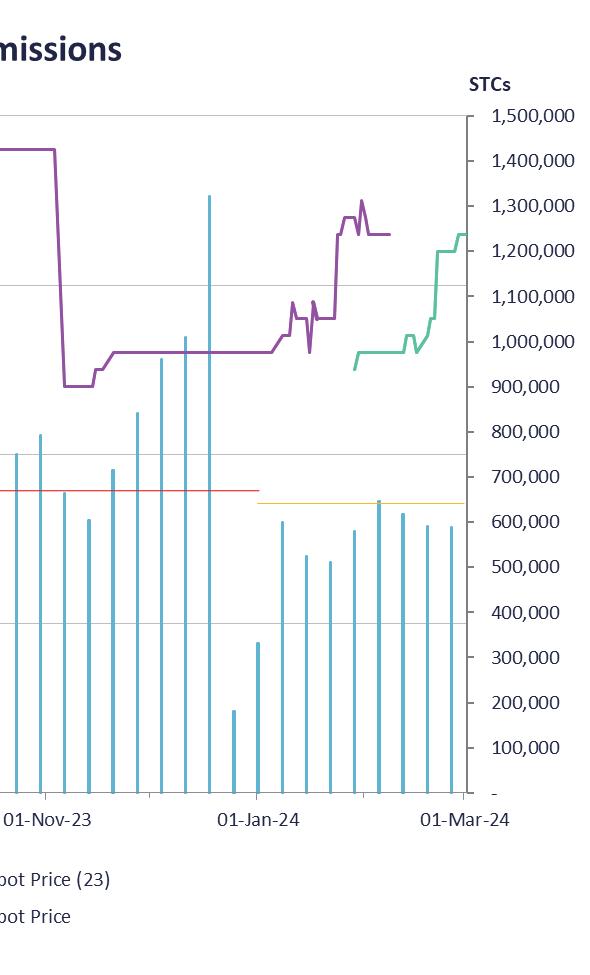
A combination of the lofty prices, some negative media coverage of the scheme and speculation about some liable entities preparing to pay the penalty then saw the market soften back to $90 by the months end.
The unprecedentedly low creation that saw the VEEC price surpass the nominal penalty rate $9 . late last year has continued to s uee e the market higher, on its way to a new record high of $96. in early ebruary
Energy efficiency markets (VEECs and ESCs)
A combination of the lofty prices, some negative media coverage of the scheme and speculation about some liable entities preparing to pay the penalty then saw the market soften back to $9 by the months end.
The unprecedentedly low creation that saw the VEEC price surpass the nominal penalty rate ($90.00) late last year has continued to squeeze the market higher, on its way to a new record high of $96.50 in early February.
With average creation coming in at less than $70,000 per week this year to date, supply is seemingly set to only grow tighter with the likely ban on telemarketing and doorknocking on the horizon. A second consultation was released by the VEU in Feb which outlined a few possible scenarios, all of which see telemarketing banned.
ith average creation coming in at less than $ , per week this year to date,supply is seemingly setto only grow tighter with the likely ban on telemarketing and doorknockingon the hori on. A second consultation was released by the VE in eb which outlined a few possible scenarios, all of which see telemarketing banned.
Based on current creation rates, the scheme appears set to have insufficient VEECs available for the Cal 24 obligation. At the time of writing the price had edged higher to $91
All graphs supplied by CORE Markets.
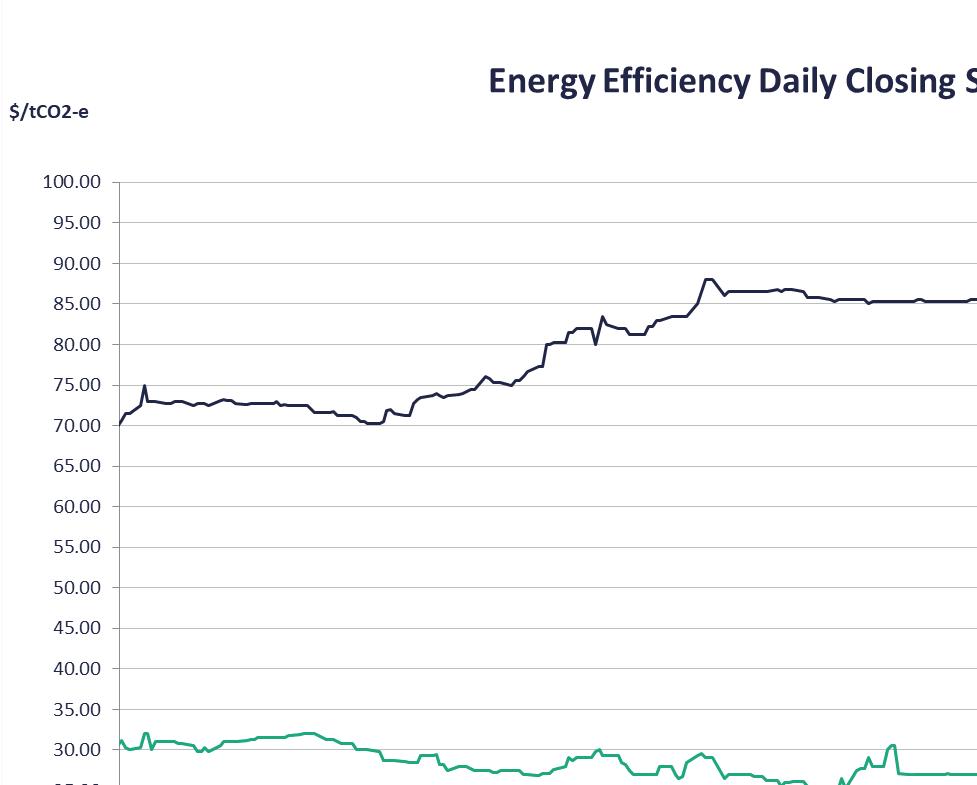


CORE Markets is an end-to-end markets, technology and climate solutions partner for business. The above information has been provided by CORE Markets and relates, unless otherwise indicated, to the spot prices in Australian dollars, as of March 1 2024.
Marco Stella is Head of Carbon and Renewable Markets at CORE Markets.
In stark contrast to the VEEC market, ESC prices have only softened further, underpinned by continued buoyant creation At the time of writing prices are sitting at multiyear lows below $22, with an average weekly creation at more than double that of VEECs at 168k per week this year to date The growth in creation owes in large part to the success of heat pump installations across residential and commercial sectors.
There is however a suite of changes that appear set to make it harder to create for both heat pumps, whilst also taking steps to begin the phase out of the other main source of creation, commercial
Based on current creation rates, the scheme appears set to have insufficient VEECs available for the Cal 24 obligation. At the time of writing the price had edged higher to $91.
In stark contrast to the VEEC market, ESC prices have only softened further, underpinned by continued buoyant creation. At the time of writing prices are sitting at multiyear lows below $22, with an average weekly creation at more than double that of VEECs at 168k per week this year to date. The growth in creation owes in large part to the success of heat pump installations across residential and commercial sectors.
There is however a suite of changes that appear set to make it harder to create for both heat pumps, whilst also taking steps to begin the phase out of the other main source of creation, commercial lighting.

MARKET WRAP | SOLAR INSTALLER www.ecogeneration.com.au April 2024 ecogeneration | 53
Image: Miha Creative/stock.adobe.come.au
CORE Markets provides an overview of Australia’s latest clean energy market.
Equinix unveils 1MW rooftop solar system
Australia’s grids have welcomed another megawatt of clean energy as Equinix added a new rooftop solar system at its ME1 International Business Exchange data centre in Melbourne.

Equinix Australia Managing Director Guy Danskine highlighted the company’s commitment to decarbonising the grid and fostering a sustainable future for data centres.


Featuring more than 2000 QCell panels, the system is Equinix’s largest on-site rooftop solar photovoltaic (PV) system and one of the largest in any Australian data centre.
The unveiling ceremony at the Equinix ME1 data centre was officiated by Victoria’s Minister for Climate Action, for Energy and Resources Lily D’Ambrosio.
According to Minister D’Ambrosio, the installation of this system marks a significant step toward Victoria achieving net-zero emissions by 2045.
“The one-megawatt (MW) system, coupled with our Victorian Energy Upgrades program (VEU), highlights how collectively governments, businesses, households and communities can contribute to the overarching goal of a more sustainable environment,” D’Ambrosio said.
“Data centres are energy intensive, but through the VEU program Equinix has been able to install a large-scale solar system that reduces their operating costs and helps to lower their emissions.
“Since 2009, the VEU has helped more than two million households and 150,000 businesses lower their energy bills, and we look forward to saving them even more when we bring more options into the program soon.”
To fund the Melbourne rooftop solar deployment, Equinix utilised Victorian Energy Efficiency Certificates (VEECs) through the VEU program, which aims to reduce power bills and greenhouse gas emissions across the state.
The new rooftop solar system is part of Equinix’s commitment to reducing energy costs and addressing climate change. With the support of the Victorian Government, the company has completed rooftop solar installations at eight data centres across Brisbane, Canberra, Melbourne and Sydney, contributing approximately 1.8MW of clean energy to local power grids.
“In Australia, we have invested millions of dollars in solar systems and have plans to expand this further,” he said.
“We are constantly exploring ways to deliver our digital infrastructure in the most sustainable way to address surging digital needs of businesses and support the future development of the country’s digital economy.”
According to Equinix, the company is always exploring ways to deliver digital infrastructure in the most sustainable way to support the Australia’s growing digital economy.
This move aligns with Equinix’s strategy to contribute to decarbonisation and add clean energy to the local grid. Earlier this month, the company secured a long-term renewable energy power purchase agreement in the Asia-Pacific region, acquiring 151MW from the Golden Plains Wind Farm, east of Victoria.
Equinix has maintained over 90 per cent renewable energy coverage globally since 2018, achieving 96 per cent in 2022.
The company aims to achieve 100 per cent renewable energy coverage by 2030.


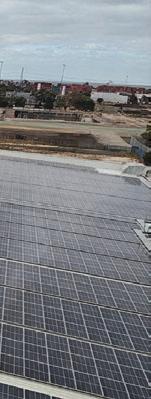

54 | ecogeneration April 2024 www.ecogeneration.com.au
SOLAR INSTALLER | ROOFTOP SOLAR
Equinix’s rooftop solar system.
L–R: Guy Danskine, Equinix Australia Managing Director, Lily D’Ambrosio MP, Minister for Climate Action, Energy and Resources and the State Electricity Commission, and Nina Taylor MP, Labor Member for Albert Park at the unveiling of the new 1MW solar system.
Image: Equinix
Image: Prime Creative Media
ecogeneration publisher first to use paper-wrapping mailing machine
Prime Creative Media is Australia’s first publisher to send paper wrapped magazines at scale, in partnership with its printing and mailing supplier FSG.
Based in Bayswater, Victoria, FSG purchased the country’s first ever paper-wrapping mailing machine in January this year. Imported from UK supplier Norpak, the machine’s ability to wrap publications in paper will eliminate plastic wrapping for several Prime Creative Media titles.
“It’s the evolution of the mailing industry to abolish the use of single-use plastics in mailing magazines,” Michael Murphy, owner and director of FSG Mailing said. “This follows the government’s move to get disposable plastics out of our Australian systems.”
Up until this technology was in place, the only alternative option to plastics for publishers was paper envelopes. Murphy noted this was cost probative for many
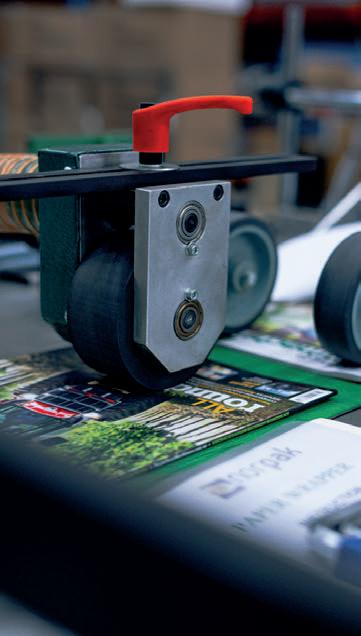
clients because the price of producing and printing the envelopes was high.
This factor, plus the labour of either hand inserting magazines into the envelopes or using expensive equipment to insert into the envelopes and seal them, was prohibitive. This added a more than threefold increase to mailing costs.
Mailing houses like FSG have experimented over the years with bioplastics, and recyclable plastics, but Murphy said the technology never quite worked out.
“We tried to use bioplastics but the settings on the machines – which use heat to seal them – make it very difficult,” he said.
“Even for those companies who worked out how to mail them, it was a challenge for consumers to separate the plastics at the end of the process, or find appropriate disposal. Eventually, we saw that the only real option was paper.”
Murphy came across this technology through his supplier UK company Norpak, who previously supplied his plastic wrapping machine.
“They introduced us to the idea because they saw what was happening in the European Union with the phase out of single-used plastics,” Murphy said. “With the Australian government making similar moves towards a full phase out of single-use plastics, we think that this machine will be the catalyst to push the movement along in the mailing industry.”
Murphy noted that in Europe, where it was put into commercial use 18 months ago, it has already taken off.
“The first person to use the machine really took a leap in the dark. Now he has 13 of these machines, and those plastic wrapping machines are sitting there not being used –they are becoming museum pieces,” Murphy said. “That will be the future in Australia
now that this machine has arrived.”
An additional environmental benefit to the machine is that because the addresses are printed directly onto the paper wrapping, it eliminates the need for flysheets – the paper that lists the addresses and is placed onto a magazine. This improves efficiency, as it limits the printing and transportation of flysheets. It also means that only a moderately more amount of paper is being used in the new paper-wrapping system, once you take into account the paper used in flysheet printing.
The only drawback, Murphy noted, was that the paper is less weather-proof. In Europe many people live in apartments instead of houses, and magazines are delivered in post boxes or through slits in doors. He said it’ll be interested to see how the paper stands up to Australia’s climate. That being said, he notes the price of a slightly damp magazine is one worth paying to save thousands of tonnes of plastic wrapping from going to landfill every year.
Prime Creative Media COO, Christine Clancy, was on site at FSG in Bayswater to witness the first publications being sent out in paper-wrapping.
“It’s such an honour to watch history in the making, to see our publications make this first step in reducing single use plastics in our environment,” Clancy said.
She noted that the company has long been involved in supporting the growth of the waste management industry, through its publications Inside Waste and Waste Management Review, along with its annual Waste Awards.
“After years of reporting on the challenges of single-use plastics in the waste industry, it’s so wonderful for us to play a proactive part in it by reducing our own use,” Clancy said. “We’re fortunate to have FSG as a partner to help make this happen.”
www.ecogeneration.com.au April 2024 ecogeneration | 55 PAPER-WRAPPING MAILING MACHINE | PRIME CREATIVE MEDIA
ecogeneration will now come wrapped in paper, abolishing the use of single-use plastics
Image: Prime Creative Media

Exploring the winds of change
CICA brought together wind farm developers, safety bodies and crane hire companies to address key issues in developing wind infrastructure with its ‘Cranes in Wind’ forum.
Hosted at the Melbourne’s Hyatt Place Hotel in Essendon Fields, the balmy, 20-degree day set the tone for a day of networking on February 14.
Pulling up for the morning networking, a slight breeze rushed around the group of people gathering to discuss the future of stronger winds, and how it could be harnessed to help the world achieve net zero emissions by 2050. Around the room, crane hire company owners, general managers, heavy lift supervisors, lift engineers, safety professionals and wind farm developers came together to discuss the topic on everyone’s lips for the day: how can wind farm manufacturers make life easier for crane hire companies?
The day began with CICA CEO, Brandon Hitch, discussing the origins and intentions of the event, performing the function that an abstract does for a research paper. Nine months ago, the idea for the ‘Cranes in Wind’
forum was born from a conversation with Boom Logistics’ Nick Morris, where they both agreed it was imperative for the future of the industry to hold a non-commercial event and undertake abrasive, confronting discussions about the levels of safety and the levels of risk being borne by crane hire companies in constructing wind farms. The first speech did not disappoint: delivered by Liebherr Business Development Manager, Hans Jörg Nothacker, a harsh reality check was provided for the prospects of achieving net zero by 2050.
As Nothacker pointed out, to achieve net zero by 2050, the world will need to install an extra two terawatts of wind power per year. That means larger wind turbines, with larger hub heights. Hub heights have already exploded in size from 20m to 165m, and that upwards trend isn’t going to stop. Designs from French renewables manufacturer, Vestas, show turbines reaching 199m tall and
producing seven megawatts of power. The other key aspect explored was how terrains and environments differed across geographical regions of the world, and how those features affect not only the designs of the wind farms but how cranes engage in construction and maintenance.
In North America, for example, the terrain is flat, easily negotiated, spacious and machinery can navigate it easily. South America poses hilly terrains with confined operating environments – a nightmare for heavy machinery to navigate. In Australia, the climate is diverse, covering all the above, encapsulating the key point contained within Nothacker’s speech: how can manufacturers be expected to design a worldwide windfarm crane that keeps up with the rapid development of windfarms, when windfarms themselves are so variable across the globe?
Following Nothacker’s speech was the
56 | ecogeneration April 2024 www.ecogeneration.com.au WIND | CRANES IN WIND
Boom Logistics using its Liebherr LG 1750, an ideal crane for wind farm construction.
Image: Boom Logistics

delivery of more home truths. Nick Morris, Engineering Manager at Boom Logistics, and George Grasso, UAA’s Chief Claims Officer, took the floor to reflect on notable crane incidents on wind farms, how they came about, the repercussions that followed and how they could be avoided. The main premise of the two speeches revolved around one key fact: with bigger wind farms comes bigger cranes and heavier rigging, meaning that every move, by default, becomes much higher risk due to the significantly decreased margin for error.
Morris addressed two incidents of note. He first discussed a uniform road failure underneath a 500-tonne capacity crane that led to the machine being bogged down and needing to be towed out. Then, he explored the rollover of a pick and carry crane due to ground failure during the crane’s articulation in an unspecified danger zone. Both issues highlighted the need for greater transparency and communication from wind farm teams to crane hire companies about road development, road maintenance and on-site specifications to ensure that there are no surprises discovered when a heavy machine enters the fray. This was compounded by geotechnical engineer, Alan Johnson, who explored the importance of properly analysing a soil’s subgrade, knowing exactly what ground pressure is being exerted on what kind of surface, and ensuring everyone is on the same page.
The most confronting images were saved until Grasso’s speech: black and white images of two 800-tonne capacity cranes, cast on their sides. Grasso spoke over the photos, emphasising that it wasn’t about the colour of the crane involved, but the lessons we can learn – and the very real consequences of ignoring them. These incidents didn’t occur in a vacuum, and in discussing them the context of the industry they occurred in can’t be removed: the amount of risk being undertaken by crane hire companies in constructing and maintaining wind farms is inequitable, and the urgency driven by competitiveness and lower rates is driving crane hire companies to stretch the boundaries of what a crane can and can’t do.
Neither incident occurred during the lifting of wind turbine components; instead, the incidents occurred when the crane was being ‘walked’ from turbine to turbine. Instead of being fully disassembled, the cranes would be slowly driven, partially rigged, from site-tosite, in order to save time on the lengthy process of assembling and rigging an 800tonne capacity crane. In both cases, mitigating actions could have been taken, but were not,
hence one of the key take-aways being the importance of ensuring every worker has received the adequate amount of training and is fully up to date on the necessary safety protocols required to fulfil the task ahead of them. At the very core of the issue, according to Grasso, however, were the risks identified in the contracting process; with companies that are traditionally sub-contractors, they are being asked to cut safety corners to meet strict deadlines, keep costs down, and maintain their competitive advantage.
This was a theme revisited in the ‘crane owners’ panel consisting of Freo Group’s Carlo Francis, Boom’s Nick Morris, Borger Cranes’ Nathan Borger and BMS Heavy Cranes’ Anders Ekdal, when the panel was asked what the commonalities were between wind farm customers.
First up to answer the question was Francis, who said, quite simply: “everybody wants more for less”. The panel struggled to find a different answer, highlighting the difficulties crane hire companies are experiencing when being contracted to construct or maintain a wind farm. When quizzed on the highest risks of operating in windy environments, Borger and Ekdal’s answers further underscored the notions brought forth by both Grasso and Morris: relocation presented the biggest risk in the industry, well ahead of the actual lifts being undertaken.
For the panel, lifts are always meticulously planned, and every detail is always followed to the nth degree; because of this, safety parameters and procedures are in place.
Relocation, however, creates a space to cut corners and take risks, hence its position as the biggest threat to safety, as Ekdal said.
Across the event, the heavy discussions were broken up by presentations on some unique lifts across the country. A presentation was conducted by Fleurieu Cranes’ Business Development Manager, Chris Leane, who discussed the complex rigging arrangements required to replace a burnt wind turbine’s rotor and blades. Going through the full intricacies of the job, the company showcased one of the many projects it has deployed its new, 700-tonne Liebherr on.
Finally, BMS Heavy Cranes’ Lead Project Engineer, Liam Edwards, discussed three projects from across the globe, where the global heavy lifting superpower completed mammoth lifts utilising its range of Liebherr crawler cranes – inclusive of its LR11350 – to complete lifts of over 500 tonnes to heights of over 150m in some instances.
The elegance, and magnitude, of BMS’ lifts provided the perfect bookend to a day that began with Hans Jörg Nothacker’s speech highlighting that the biggest, newest cranes are already becoming obsolete due to the rapid rate of development. Despite their incredible civil engineering feats, these machines are at the top end of what cranes can actually do; and, with wind turbines set to get bigger in the push for net zero by 2050, the question loomed ominously over everyone as to how crane hire companies can safely, effectively and reasonably complete the work being asked of them by wind farm manufacturers.
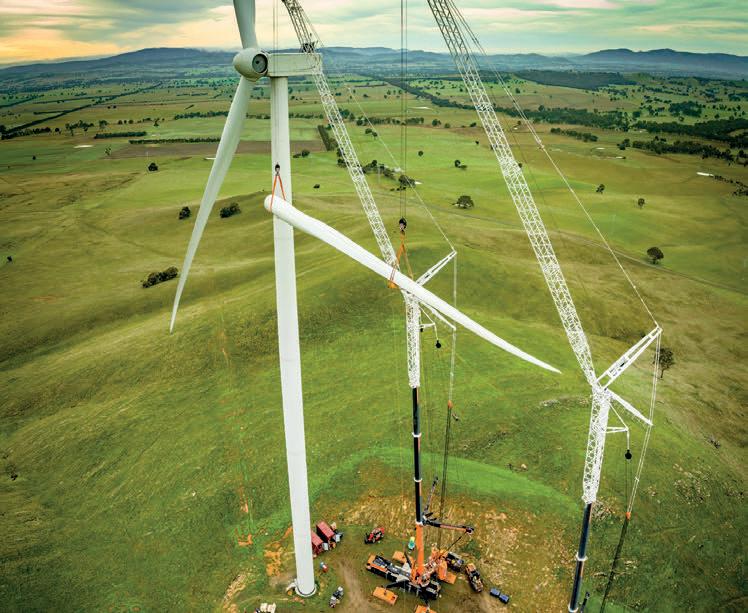
www.ecogeneration.com.au April 2024 ecogeneration | 57 WIND | CRANES IN WIND
JYC’s configuration of its two 800-tonne Liebherr mobile cranes required a detailed lift plan at a project in Victoria.
Image: Johnson & Young Cranes

Centre (MCEC).
With only 5 per cent of the floor plan remaining, this is the final opportunity to secure a position.
This two-day extravaganza offers an exclusive, free-to-attend business-tobusiness conference and exhibition, connecting over 11,500 visitors with 400 exhibitors. According to the Audited Media Association of Australia, this event stands tall as the largest and most eagerly awaited clean energy gathering in the country.
The conference, a highlight of the event, features over 400 international and national speakers unravelling the latest developments, trends, and projections in the energy sector.
All Energy Australia is a grand symphony of the renewable energy sector. Over 95 per cent of the floor plan has already been secured by industry-leading names: Sungrow, Goodwe, NEXTracker, Hithium Energy Storage, SMA, Tongwei, Array Technology, Sonnen, Canadian Solar, CATL, Victron Energy, Enphase Energy, Hanwha Q Cells, Gamechange Solar, REC Solar, Jinko Solar, Krannich, Growatt, Raystech, and One Stop Warehouse.
Participants can also expect to meet leading electric vehicle (EV) and heat pump brands: Stiebel Eltron, Emerald Energy, LG Energy, Micoe, Solar Thermal, iStore, Wallbox, Kempower, Evnex, Schneider Electric, Tesla, BYD, SMAPPEE, Delta, Fronius, Shoals, SolarEdge, and ZJ Beny.
With themes spanning multiple stages, attendees are guaranteed a holistic

understanding of the industry’s present and future.
The exhibition floor is a treasure trove of innovation, showcasing products and services from both local and international quality suppliers.
This is the chance to stay at the forefront of the renewable energy industry, witnessing the solutions that are driving the green revolution.
Last year, All Energy Australia 2023 set a record with more than 11,500 unique visitors in attendance. The overwhelming response underscores the industry’s unwavering enthusiasm and commitment to advancing the future of sustainable power generation.
This year’s event promises to be even more ground-breaking, building on the success of the previous edition.
And don’t miss the MyCEC Masterclass—a one-stop shop for solar designers and installers seeking expert advice. Attendance is not only free but also earns eligible installers CPD points, making it a must for those looking to stay at the forefront of solar technology.
All Energy Australia isn’t just about learning; it’s an experience. At All Energy 2023, participants took part in different activities like networking, workshops,
breakfast sessions, and more, gaining valuable insights and experiences.
Robby Clark, Portfolio Director at RX Global, the organiser of All Energy Australia, said he was impressed with the increase in visitors during last year’s event.
“The two days were truly incredible, with exhibition halls constantly busy and conference sessions at standing room only. All Energy Australia 2023 has not only exceeded our expectations but has also set a new standard for excellence in the clean energy events landscape,” he said.
Kane Thornton, CEO of the CEC, partners in the event, emphasised the event’s growth and impact.
“It’s the biggest exhibition for the entire clean energy industry with over 400 exhibitors showcasing their latest products alongside a fantastic speaker program. We had some extraordinary keynote speakers and some highly technical sessions throughout the two days,” Thornton said.
All Energy Australia 2024 is the ticket to the future of clean energy. This is the opportunity to be part of history as well as the future of renewable energy.
To enquire to exhibit, visit all-energy.com.au
58 | ecogeneration April 2024 www.ecogeneration.com.au







DO YOU KNOW A DRIVER OF CHANGE?
WOMEN IN INDUSTRY NOMINATIONS ARE NOW OPEN. Now is your chance to nominate an industry leader who you believe is advocating for positive change and deserves to be recognised.
PROUDLY PRESENTED BY MHD
Thurs 20 June, 2024
The Women in Industry Awards recognise outstanding women leaders from across Australia’s industrials sector.
womeninindustry.com.au PROUDLY SUPPORTED BY Australia
upply






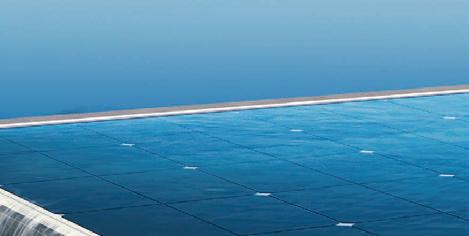


















25-Year Warranty for Extra Linear Power Output ��-year warranty ��-year warranty 15-Year Warranty for Materials and Processing Datasheet Website
































































































































































































































































































